According to the martech company 6sense, there are over 24,000 companies in the SIEM space. You probably don’t have the time to sift through that many providers, and in most cases, the top providers are “top providers” for a reason. Their tools work well, they have the size and staff to support your implementation, and they’re more likely to have a clear product roadmap.
With that said, here is our SIEM tools list featuring the best software for small, medium, and enterprise-level businesses:
- ManageEngine Log360 EDITOR’S CHOICE This on-premises package includes a log server and a SIEM tool to provide automated security scanning, activity analytical tools, and compliance auditing facilities. The package also includes a threat intelligence feed. The software runs on Windows Server. Start a 30-day free trial.
- Datadog Security Monitoring (FREE TRIAL) A cloud-native network monitoring and management system that includes real-time security monitoring and log management. Comes with over 600 vendor integrations out-of-the-box. Start on a 14-day free trial.
- Graylog (FREE PLAN) This log management package includes a SIEM service extension that is available in free and paid versions and has a cloud option.
- ManageEngine EventLog Analyzer (FREE TRIAL) A Log Management Tool that manages, protects, and mines log files. This system installs on Windows, Windows Server, and Linux.
- Trellix Helix (GET DEMO) This cloud-based system provides advanced persistent threat protection and uses SOAR to activate your existing security products for threat responses.
- Heimdal Threat Hunting and Action Center This platform adds threat detection and response functions to on-premises AVs from its cloud base.
- Microsoft Sentinel A cloud-native SIEM solution offering real-time threat detection, intelligent security analytics, and automated response capabilities.
- Elastic Security This package applies SIEM rules to the Elastic Stack group of products and provides live threat detection plus historical analysis. Available as a SaaS package or for installation on Windows, macOS, or Linux.
- Logpoint SIEM Using UEBA for baselining, this package implements AI-drive anomaly detection for threat hunting and can instruct third-party tools in response playbooks through an integrated SOAR module.
- SolarWinds Security Event Manager One of the most competitive SIEM tools on the market with a wide range of log management features.
- Fortinet FortiSIEM This security package from a highly respected provider can be combined with other Fortinet products and is offered as a hardware appliance, a virtual appliance, or as a service on AWS.
- Splunk Enterprise Security This tool for Windows and Linux is a world leader because it combines network analysis with log management together with an excellent analysis tool.
- Rapid7 InsightIDR This combined XDR and SIEM operates threat hunting in the cloud based on data collected by site agents.
- Exabeam LogRhythm SIEM Cutting-edge AI-based technology underpins this traffic and log analysis tool for Windows and Linux.
- LevelBlue (formerly AT&T Cybersecurity Great value SIEM that runs on Mac OS as well as Windows.
SIEM Features Comparison Chart
Product/Features | ManageEngine Log360 | Datadog Security | Graylog | ManageEngine EventLog Analyzer | Heimdal Threat Hunting and Action Center | Trellix Helix | Exabeam Fusion | Elastic Security | Logpoint | SolarWinds | Fortinet | Splunk |
|---|---|---|---|---|---|---|---|---|---|---|---|---|
| Log File Management, Messages, & Historical Analysis | Yes | Yes | Yes | Yes | Yes | Yes | Yes | Yes | Yes | Yes | Yes | Yes |
| Live Monitoring | Yes | Yes | Yes | Yes | Yes | Yes | Yes | Yes | Yes | Yes | Yes | Yes |
| Alerts | Email, SMS | Email, Slack and PagerDuty | Email, text, Slack, and more | Email, SMS | Threat Telemetry Visualization and XTP/MITRE ATT&CK Visualization | Customized alert management | In Product Alert Triage System | Email, Slack | Email, SSH, SNMP, HTTP, or Syslog | Email, SMS | Configurable email alerts | |
| Compliance Reporting | PCI DSS, GDPR, FISMA, HIPAA, SOX, and GLBA. | HIPAA, PCI DSS, SOC 2 Type II, ISO 27001, ISO 27017, ISO 27018, CSA, STAR, FedRAMP, GDPR, CCPA | HIPAA, PCI, FERPA, COPPA, GDPR, & More | PCI DSS, FISMA, GLBA, SOX, HIPAA, and ISO 27001 | HIPAA, PHI, GDPR | HIPAA, PCI | HIPAA, PCI DSS, SOC 2, ISO 27001, ISO/IEC 17789 (2014), ISO/IEC 19944-1 (2020), ISO/IEC Technical Specification 23167 (2020), ISO/IEC 27018 (2019), GDPR | HIPAA, PCI DSS, SOC 2 Type II, ISO 27001, ISO 27017, ISO 27018, ISAE 3000, SOC 2, SOC 3, CyberGRX, TISAX, FedRAMP, CSA STAR | Schrems II, HIPAA, GDPR, PCI-DSS and SOX | HIPAA, PCI DSS, SOX, ISO, DISA STIGs, FISMA, FERPA, NERC CIP, GLBA, and more | PCI-DSS, HIPAA, GLBA, and SOX | Product offerings differ: ISO 27001 Certification, SOC 2 Type II Report, HIPAA, PCI DSS, FedRAMP, FIPS 140-2 |
| Operating System: | Windows Server | Cloud-based | Linux or Cloud | Windows, Windows Server, and Linux. | Windows, macOS | Windows Server, Mac OS X, several Linux distributions | Cloud-based | Windows, macOS, Linux, and cloud | Linux or Cloud | Windows | Hardware, VMware, Hyper-V, KVM, OpenStack, and AWS | Windows and Linux |
Free Trial or Demo | 30-days | 14-days | 2GB Free Plan | 30-days | Free Demo | Free Trial | Demo | 14-days | Demo | Free Trial | Demo | 15-days |
Bonus: SIEM Software Guide
The Essential Features of SIEM Tools
Not all SIEM systems are built the same. As a result, there is no one-size-fits-all. A SIEM solution that’s right for one company may be incomplete for another. In this section, we break down the core features needed for a SIEM system.
- Log Data Management As mentioned above, log data management is a core component of any enterprise-scale SIEM system. A SIEM system needs to pool log info from a variety of different data sources, each with its own way of categorizing and recording data. When looking for an SIEM system, you want one that has the ability to normalize data effectively (you might need a third-party program if your SIEM system isn’t managing disparate log data well).
Once the data is normalized, it is then quantified and compared against previously recorded data. The SIEM system can then recognize patterns of malicious behavior and raise notifications to alert the user to take action. This data can then be searched by an analyst who can define new criteria for future alerts. This helps to develop the system’s defenses against new threats.
- Compliance Reporting In terms of convenience and regulatory requirements, having an SIEM with extensive compliance reporting features is very important. In general, most SIEM systems have some kind of onboard report generating system that will help you to conform to your compliance requirements.
The source of requirements of the standards that you need to conform to will be a major influence on which SIEM system you install. If your security standards are dictated by customer contracts, you don’t have much leeway on which SIEM system you choose — if it doesn’t support the required standard, then it won’t be any you’re used to. You may be required to demonstrate compliance with PCI DSS, FISMA, FERPA, HIPAA, SOX, ISO, NCUA, GLBA, NERC CIP, GPG13, DISA STIG, or one of many other industry standards.
Methodology for Choosing the Best SIEM Tools
Our methodology for creating this SIEM tools list
We reviewed the SIEM market and tested tools based on the following criteria:
- A system that gathers both log messages and live traffic data
- A log file management module
- Data analysis utilities
- The ability to report to data protection standards
- Easy to install with an easy-to-use interface
- A trial period for assessment
- The right balance between functionality and value for money
1. ManageEngine Log360 (FREE TRIAL)
Tested on: Windows Server environment
Best for Medium to Enterprise-Level Businesses: ManageEngine Log360 offers comprehensive log management and threat detection capabilities, making it suitable for organizations with complex IT infrastructures that require robust security monitoring.
ManageEngine Log360 is an on-premises package that includes agents for different operating systems and cloud platforms. The agents collect log messages and send them to the central server unit. Agents integrate with more than 700 applications so they can extract information from them. They also process Windows Event and Syslog messages.
The log server consolidates log messages and displays them in a data viewer in the dashboard as they arrive. The tool also presents metadata about log messages, such as the arrival rate.
Key Features:
- Log Collection: Gathers logs from both on-site and cloud systems.
- Log Consolidation and Filing: Organizes and consolidates logs for efficient storage and retrieval.
- Log Analysis Tools: Provides tools for in-depth analysis of logs, helping in identifying patterns and anomalies.
- File Integrity Monitoring: Monitors and ensures the integrity of files, detecting unauthorized changes.
Comparitech SupportScore
Based on our multi-point analysis of the key signals for effective customer and product support, ManageEngine received a 93/100 SupportScore. This means that ManageEngine is likely to provide a significant amount of customer and product support in a manner that works for most companies. That said, user experience will vary, and if you’re exploring ManageEngine, you should use this information to qualify the type of customer and product support you may receive, including asking for customer experience stories.
We recommend you book a discovery call with ManageEngine to learn more about the breadth and quality of its customer support and product support.
Why do we recommend it?
ManageEngine Log360 is a package of ManageEngine tools, including the EventLog Analyzer. You get all of the log management and threat hunting in the EventLog Analyzer package plus user activity tracking, file integrity monitoring, and Active Directory controls.
This SIEM receives a threat intelligence feed, which improves the speed of threat detection. If suspicious activity is spotted, Log360 raises an alert. Alerts can be sent through service desk systems, such as ManageEngine ServiceDesk Plus, Jira, and Kayoko. The package also includes a compliance reporting module for PCI DSS, GDPR, FISMA, HIPAA, SOX, and GLBA.
Pros:
- Threat Intelligence Feed: Integrates a threat intelligence feed to stay updated on the latest security threats.
- Alerts Sent to Service Desk Packages: Sends alerts to service desk packages, streamlining incident response and resolution.
- Merges Windows Events and Syslog: Standardizes log formats by merging Windows Events and Syslog messages.
- Automated Threat Detection: Utilizes automated mechanisms to detect and respond to potential threats.
Cons:
- Limited Platform Support: Not available for Linux, potentially limiting its use in environments with Linux systems.
ManageEngine Log360 runs on Windows Server and it is available for a 30-day free trial.
EDITOR'S CHOICE
ManageEngine Log360 is our top pick for a SIEM tool because it provides a comprehensive log manager that creates a large data pool for threat hunting. The log manager will collect log messages from any source, which includes Syslog, Windows Events, and application logs. This system will store all of those different logs in the same format. This consolidation process also enables logs to be searched as one body in the data analyzer of Log360. Compliance management is another major benefit of this package.
Download: Download a 30-day FREE Trial
Official Site: https://www.manageengine.com/log-management/download.html
OS: Windows Server
2. Datadog Security Monitoring (FREE TRIAL)
Tested on: Cloud/SaaS
Best for Small to Medium-sized Businesses: Datadog’s cloud-native platform offers real-time security monitoring with easy integration, ideal for smaller organizations seeking a user-friendly solution without extensive on-premises infrastructure.
Datadog is a cloud-based system monitoring package that includes security monitoring. The security features of the system are contained in a specialized module. This is a full SIEM system because it monitors live events, but collects them as log file entries, so it operates both on log information and on monitoring data. The service collects local information through an agent, which uploads each record to the Datadog server. The security monitoring module then analyzes all incoming notifications and files them.
Key Features:
- Full Security Visibility: Provides comprehensive security visibility through integration with over 500 tools and services.
- Over 600 Vendor Integrations: Integrates with over 600 vendors, providing extensive compatibility with various tools and services.
- Unified Dashboard: Enables users to observe metrics, traces, logs, and other data from a unified dashboard.
- Out-of-the-Box Detection Rules: Provides robust pre-configured detection rules out-of-the-box for streamlined threat detection.
Unique Feature:
The Datadog security package is delivered in three units that include Posture Management to scan cloud systems for vulnerabilities and Workload Security for live security monitoring. The third stand is the Cloud SIEM, which implements security scanning for on-premises systems.
Comparitech SupportScore
Based on our multi-point analysis of the key signals for effective customer and product support, Datadog received a 95/100 SupportScore. Datadog is highly likely to have strong, ongoing customer support and product support thanks to high scores across all five SupportScore signals. Nevertheless, this is not a guarantee, as your company may have a unique structure or needs that don’t align with the level of customer service that Datadog can provide.
We recommend you speak directly with Datadog to learn more about the breadth and quality of its customer support and product support.
Why do we recommend it?
Datadog Security Monitoring is a cloud-based SIEM that is a great choice for multi-site businesses. The service is also able to gather activity data from cloud platforms, making it ideal for a hybrid system. The Datadog platform includes a range of tools that can extend the security monitoring of this package with other functions, such as log management and an audit trail service.
Security events trigger alerts for the service in the console. The console also gives access to all event records. Logged messages are indexed and retained for 15 months. They can be accessed for analysis through the Datadog console or extracted and imported into another analysis tool.
The offsite processing capabilities reduce the processing demands on your infrastructure. It also makes it very easy to monitor remote networks. The analysis service has a pre-defined set of rules that will automatically detect known attack vectors.
Datadog updates the pool of detection rules automatically when new attack strategies are discovered. This means that the system administrators don’t need to worry about keeping security software up to date because that process happens automatically on the cloud server. It is also very easy for a systems administrator to create custom detection and mitigation rules.
Datadog offers a menu of specialist modules and all of them can be deployed individually or as a suite. You get greater functionality by combining modules, which are all able to share data about the monitored system.
Pros:
- Real-time Threat Detection: Allows users to start detecting threats immediately with default rules aligned to the MITRE ATT&CK framework.
- Gartner Survey Rating: DataDog scored 4.6/5 in a Gartner survey of IT customers, indicating high satisfaction among users.
- 14-day Free Trial: Offers a 14-day free trial period for users to explore and evaluate the platform.
Cons:
- Overwhelming Functionality: The wealth of functionality provided by DataDog may be a little overwhelming for users, especially during the initial stages of use.
Datadog is available on a 14-day free trial.
3. Graylog (FREE PLAN)
Tested on: Linux on a VM
- Best for Small to Enterprise-level Businesses: Graylog’s open-source log management system is cost-effective and customizable, making it a good fit for smaller organizations with limited budgets and specific security needs, while its paid options scale nicely for larger organizations.
Graylog is a log management system that can be adapted for use as a SIEM tool. The package includes a data collector that picks up log messages that derive from operating systems. It is also able to catch log data from a list of applications with which the package has integrations. The two main formats that Graylog will capture are Syslog and Windows Events.
Key Features:
- Data Collector: Provides a data collector to gather and manage log data for analysis.
- Application Integrations: Supports integrations with various applications, enhancing compatibility and data consolidation.
- Syslog and Windows Events: Capable of handling both Syslog messages and Windows Events for a comprehensive log management solution.
- Consolidator: Acts as a consolidator, bringing together logs from diverse sources for unified analysis.
- Ad-hoc Query Tool: Provides an ad-hoc query tool for on-the-fly analysis and investigation of log data.
Comparitech SupportScore
Based on our multi-point analysis of the key signals for effective customer and product support, Graylog received a 91/100 SupportScore. Graylog’s key support signals mostly flash green, making this a solid company to consider if you need a high degree of customer service and support. However, its SupportScore is no guarantee that you will receive the kind of support your company needs as user experiences will vary.
We recommend you speak directly with Graylog to learn more about the breadth and quality of its customer support and product support.
Why do we recommend it?
Originally a free, open-source system, Graylog has gathered a large and loyal user community through its years of operations. The more recent SIEM functions build on a solid log management tool.
The data collector passes log messages to a log server, where they are consolidated into a common format. The Graylog system calculates log throughput statistics and shows live tail records in the console as they arrive. The log server then files messages and manages a meaningful directory structure. Any of the logs can be called back into the data viewer for analysis.
The Graylog system includes pre-written templates for SIEM functions. These can be adapted and it is also possible to implement playbooks for automated responses on the detection of a threat.
Pros:
- Adaptable SIEM Functions: Offers adaptable SIEM functions for robust security monitoring.
- Orchestration with Access Rights Managers: Supports orchestration with access rights managers and firewalls, enhancing overall security posture.
Cons:
- Won’t Install on Windows: One limitation is that Graylog won’t install on Windows, potentially restricting deployment options for users preferring Windows-based environments.
There are four versions of Graylog. The original edition is called Graylog Open, which is a free, open-source package with community support. That package installs on Linux or over a VM. The two main versions are Graylog Enterprise and Graylog Cloud. The difference between these is that Graylog Cloud is a SaaS package and it includes storage space for log files. The Enterprise system runs over a VM. There is also a free version of Enterprise called Graylog Small Business. That free plan is limited to processing 2 GB of data per day. You can get a demo of the full Graylog Cloud edition.
4. ManageEngine EventLog Analyzer (FREE TRIAL)
Tested on: Windows, Windows Server, and Linux
Best for: Small to Medium Businesses: This tool provides real-time log analysis and compliance reporting, suitable for organizations that require straightforward log management without the complexity of larger SIEM solutions.
The ManageEngine EventLog Analyzer is a Log Management Tool because it focuses on managing logs and gleaning security and performance information from them. The tool is able to gather Windows Event log and Syslog messages. It will then organize these messages into files, rotating to new files where appropriate and storing those files in meaningfully-named directories for easy access. The EventLog Analyzer then protects those files from tampering.
Key Features:
- Log Collection: Collects and consolidates log data from Windows Event logs and Syslog messages, providing a centralized view of system events.
- Live Intrusion Detection: Monitors real-time events for potential security threats or intrusions, allowing for immediate response to suspicious activities.
- Log Analysis: Analyzes log data to identify patterns, trends, and anomalies, facilitating the detection of security incidents or operational issues.
- Alert Mechanism: Provides an alerting system that notifies users of critical events or security incidents, helping in timely response to potential threats.
Why do we recommend it?
EventLog Analyzer is available for Linux as well as for Windows Server, so this is a very good choice for businesses that run Windows endpoints but Linux servers because it can collect Windows Events while running on Linux.
The ManageEngine system is more than a log server, though. It has analytical functions that will inform you of unauthorized access to company resources. The tool will also assess the performance of key applications and services, such as Web servers, databases, DHCP servers, and print queues.
The auditing and reporting modules of the EventLog Analyzer are very useful for demonstrating data protection standards compliance. The reporting engine includes formats for compliance with PCI DSS, FISMA, GLBA, SOX, HIPAA, and ISO 27001.
Pros:
- Multi-Platform Support: Available for both Linux and Windows environments, making it versatile and adaptable to different IT infrastructures.
- Compliance Auditing: Supports compliance auditing for major standards such as HIPAA, PCI, FISMA, ensuring that organizations can meet regulatory requirements.
- Intelligent Alerting: Helps reduce false positives by employing intelligent alerting mechanisms, allowing users to prioritize specific events or areas of the network effectively.
- Free Version Available: Includes a free version for testing purposes, allowing users to explore the capabilities of the tool before making a purchase decision.
Cons:
- Feature-Dense Product: The product is described as being feature-dense, which may pose a challenge for new users who have never used a Log Management Tool.
There are four editions of ManageEngine EventLog Analyzer, and the first one is free. That free version is limited to five log sources and has a limited set of functions. The cheapest paid package is the Workstation edition, which can collect logs from up to 100 nodes. For a larger network, you would need the Premium edition, and there is a Distributed edition that will collect logs from multiple sites. All versions will run on Windows Server and Linux, and you can get either of the paid editions for a 30-day free trial.
5. Trellix Helix
Tested on: Cloud/SaaS
Best for Enterprise businesses: Trellix Helix provides comprehensive threat intelligence and automation features designed for large organizations requiring extensive security operations and incident response capabilities.
Trellix Helix is a SIEM service that is delivered from the cloud. The tool installs an agent on the network that is to be monitored, and this collects data from endpoints and network devices. This system includes several extra features that qualify it for the status of next-generation SIEM.
Key Features:
- Cloud-Based Threat Hunting: Utilizes cloud-based capabilities for threat hunting, allowing for scalable and efficient monitoring of potential security threats.
- Intelligence Feed: Incorporates an intelligence feed for real-time information on emerging threats and vulnerabilities to enhance proactive security measures.
- Integrates with Third-Party Security Systems: Enables seamless integration with third-party security systems, fostering interoperability and flexibility in the overall security infrastructure.
Comparitech SupportScore
Based on our multi-point analysis of the key signals for effective customer and product support, Trellix received a 92/100 SupportScore. The company showed well in all five of our SupportScore signals, meaning you are more likely to get high-touch customer support and ongoing product support and development. However, there is no guarantee that this will be the case.
We recommend you book a demo or discovery call directly with Trellix to and ask for more information about how it supports existing customers.

Why do we recommend it?
Trellix Helix is a competent cloud-based next-generation SIEM. This tool provides heavy processing power without the need for the buyer to invest in a host for the software. You get extra value out of your existing security tools because this SIEM extracts data from them and sends back threat remediation instructions.
Trellix is a new brand. However, the Helix system is older – it was originally developed by FireEye. The system generates user and entity behavior analytics (UEBA) to profile each device and user. It establishes a standard activity pattern for each identity and then implements anomaly-based security analysis. That is, any deviation from standard behavior is flagged as suspicious. The strategy is ideal for identifying insider threats and account takeovers.
The package also has a threat intelligence feed, which guides the threat detection system in its search through uploaded log messages and network activity records. The tool uses integrations to extract data from on-premises security tools.
Pros:
- Value for Money Through SOAR: Provides value for money by incorporating capabilities, thereby enhancing efficiency and response times through automation.
- Adaptability to Attacks: Demonstrates adaptability by tailoring threat-hunting methodologies to align with the evolving tactics of hacker attack campaigns, ensuring a proactive defense strategy.
- Vendor Reputation: The fact that a reliable security tools provider designs Trellix Helix suggests a level of trustworthiness and expertise in the field.
Cons:
- Dependency on Internet Connection: A significant drawback is that Trellix Helix can’t operate if an attacker successfully blocks the site’s Internet connection.
Trellix doesn’t offer a free trial of the Helix system. However, you can register for a free demo.
6. Heimdal Threat Hunting and Action Center
Tested on: Cloud/SaaS
Best for Medium to Enterprise-Level Businesses: Heimdal offers advanced threat detection and response capabilities, making it appropriate for organizations with dedicated security teams needing proactive threat-hunting tools.
Heimdal Threat Hunting and Action Center is an add-on function to the Heimdal cybersecurity environment, creating a centralized threat detection and response service from data pooled from on-premises Heimdal products. The essential contributor to threat-hunting source data is the Heimdal Next-Generation Anti-Virus (HGAV) package. This system incorporates a mobile device management (MDM) and is available for Windows, macOS, Linux, Android, and iOS.
Key Features:
- Centralized Threat Detection: Offers a centralized approach to detecting and managing security threats across computer systems and mobile devices.
- Data Gathering: Gathers and analyzes data from both computers and mobile devices, providing a comprehensive view of the security landscape.
Comparitech SupportScore
Based on our multi-point analysis of the key signals for effective customer and product support, Heimdal received an 88/100 SupportScore. This score was achieved thanks in no small part to the company showing positive signs across our SupportScore data signals. The likelihood that you will receive adequate customer support and product support is high but not guaranteed. You should consider talking directly to Heimdal’s team about its support capabilities.
We recommend you book a discovery call with Heimdal’s team and ask for more details and, if available, customer stories or examples of support.
Why do we recommend it?
Heimdal Threat Hunting and Action Center provides a private threat intelligence service for a company. It aggregates data from local devices and creates a centralized data pool for threat detection. Data exchange is two-way because detected threats trigger responses, which can include local system hardening for devices that have not yet been hit.
The Threat Hunting and Action Center won’t activate unless you have the NGAV system plus two other Heimdal products. This is because the unit that performs threat hunting, which is called the XTP Engine, relies on data uploaded by those on-premises products. “XTP” stands for Extended Threat Protection.
The systems that you can choose from are Network Security, Email Security, Patching & Asset Management, and Endpoint Security. If you have more than two of those as well as the NGAV, your threat detection and response capabilities will get even better.
The Action Center provides automated responses when the threat Hunting module detects a threat. These instructions not only tell the affected device how to shut down the threat but also informs all other devices to create system hardening. For example, this would block lateral movement by malware or an intruder.
Pros:
- Automated Responses: Implements automated responses to security threats, allowing for swift actions to mitigate and address potential risks.
- Provides Vulnerability: Offers not only real-time threat detection but also includes vulnerability scanning, addressing potential weaknesses in the system.
Cons:
- Not a Standalone Service: One of the identified drawbacks is that Heimdal is not a standalone service. It’s essential to consider this when evaluating the product, as organizations may need to integrate it into existing security infrastructure or use it in conjunction with other services.
You can’t get a free trial of the Threat Hunting and Action Center because the tool is part of a whole package, and you can choose different on-premises elements for your implementation. The best way to explore this system before buying is to request a free demo.
7. Microsoft Sentinel
Test on: Due to a lock of trial options, this tool was not directly tested.
Best for Medium to Enterprise-Level Businesses: Microsoft Sentinel is a cloud-native SIEM solution that offers real-time threat detection and intelligent security analytics, suitable for organizations leveraging Azure services.
Microsoft Sentinel is a cloud-native Security Information and Event Management (SIEM) and Security Orchestration, Automation, and Response (SOAR) solution that leverages artificial intelligence and machine learning to provide real-time threat detection, proactive security analytics, and automated response capabilities. Built on top of Microsoft Azure, Sentinel integrates with various security tools and enables organizations to monitor and protect their entire IT ecosystem.
Key Features:
- Cloud-Native System: As a fully managed service, Sentinel is built on Microsoft Azure.
- Real-Time Threat Detection: Uses AI and machine learning to provide advanced threat detection.
- Integrated Security Analytics: Aggregates data from across your environment for security analytics.
Why Do We Recommend It?
Microsoft Sentinel provides an entire platform for a Security Operations Center. It is a blend of both a SIEM and a SOAR. The tool scans log messages, like any traditional SIEM, but you can also feed in signals from other cybersecurity systems. This package minimizes human intervention, improving accuracy and efficiency.
Microsoft Sentinel can monitor various environments, including on-premises systems, Azure resources, and other cloud platforms like AWS and Google Cloud. It integrates easily with security solutions across hybrid environments, collecting data from various sources such as firewalls, servers, endpoints, cloud applications, and IoT devices. Sentinel can ingest security logs from virtually any system or platform, including Microsoft and non-Microsoft products.
The SOAR capabilities of Microsoft Sentinel expand and automate incident response. Sentinel uses playbooks to automate common security operations tasks, such as blocking suspicious IP addresses, sending notifications, or isolating compromised machines. These playbooks can be triggered by specific alerts or anomalies, providing an immediate automated response.
Pros:
- Security Automation & Orchestration (SOAR): Automated incident response workflows reduce manual intervention.
- Threat Intelligence Integration: Can accept external threat intelligence feeds.
- Multi-Environment Monitoring: It supports monitoring for on-premises, hybrid, and multi-cloud infrastructures.
Cons:
- Cloud-Dependent: No on-premises version.
Microsoft Sentinel’s pricing is based on retention and data ingested (per GB). While the solution provides various pricing tiers to accommodate different organizational needs, including pay-as-you-go and reserved capacity models, it can become costly for enterprises with large volumes of log data. To start using Microsoft Sentinel, users need an Azure account. Once registered, they can access Sentinel via the Azure Portal and begin configuring their environments.
8. Elastic Security
Tested on: Windows, macOS, Linux, and cloud
Best for Medium to Enterprise-Level Businesses: Elastic Security integrates SIEM capabilities with the Elastic Stack, providing scalability and flexibility for organizations with substantial data analysis needs.
The Elastic Stack is a group of free tools that can be used to analyze any dataset. This is a very widely used package that includes Logstash for log message collection, Elasticsearch for data assessments, and Kibana to display results. The group is also known as ELK. The problem most users will face when using ELK for security monitoring is that it takes a lot of work to set up your own search rules. However, Elastic Security is a paid package of all of the rules and settings that you need in order to make an SIEM system out of ELK.
Key Features:
- Log Collection: The platform is designed to collect log messages from various sources, facilitating centralized log management.
- Log Analysis: Provides capabilities for both live and historical analysis of log data, allowing users to gain insights in real-time and retrospectively.
- Out-of-the-Box Threat Hunting: Offers out-of-the-box threat hunting capabilities, allowing users to search for potential security threats within the log data proactively.
Comparitech SupportScore
Based on our multi-point analysis of the key signals for effective customer and product support, Elastic earned a 95/100 SupportScore. This score means that Elastic performed well against our 5-point signal analysis for customer and product support and that you are highly likely to receive good service from his company. However, user experiences will vary, so you will need to verify what support looks like if Elastic is on your shortlist of vendors.
We recommend reaching out to Elastic’s team to learn more about how it supports both its customers and its products.
Why do we recommend it?
Although the Elastic Security package operates on your ELK installation, it doesn’t reserve the entire stack for its own use. You can still create your own data analysis tools alongside your constantly-running ELK SIEM system. This makes the Elastic Security service very good value for money.
You can adapt the Elastic Security package to take any source of data, such as application status reports as well as operating system log messages. The service isn’t limited to monitoring one site or platform, so you can channel source data into the SIEM from any site and also cloud services.
Pros:
- Deployment Options: Elastic Stack offers flexibility in deployment options, allowing users to choose configurations that suit their specific needs.
- Customizable with Extra Data Sources: Elastic Stack can be customized by integrating additional data sources, providing users with the flexibility to tailor the platform to their specific requirements.
Cons:
- Requires Work to Set Up: The setup process might involve configuration and customization, which could be perceived as a potential challenge for users.
Elastic Security is included in all of the paid plans for the Elastic Stack system and the price is the same whether you host the software yourself or access it on Elastic Cloud. There are five price points and all of the editions include performance monitoring as well as the security package. You can assess any of the plans on Elastic Cloud with a 14-day free trial.
9. Logpoint SIEM
Tested on: Linux and Cloud
Logpoint SIEM
Best for Medium to Enterprise-level Businesses: Logpoint SIEM provides advanced analytics and compliance reporting, catering to organizations that need scalable solutions to handle extensive security data.

Logpoint is a security package that includes a SIEM, user and entity behavior analysis (UEBA), and security orchestration, automation, and response (SOAR). This represents a closed-loop security system that can manage your entire Security Operations Center (SOC). As the service’s name suggests, the core of the system is a log manager.
Key Features:
- Log Collection and Management: Facilitates the collection and management of logs for comprehensive security monitoring.
- User and Entity Behavior Analytics (UEBA): Utilizes AI and UEBA to analyze user and entity behavior for advanced threat detection.
- SOAR Capabilities: Incorporates Security Orchestration, Automation, and Response (SOAR) capabilities for automated incident response.
- GDPR Reporting: Includes features for GDPR reporting, helping organizations comply with data protection regulations.
Comparitech SupportScore
Based on our multi-point analysis of the key signals for effective customer and product support, Logpoint received a 92/100 SupportScore. This means that Logpoint is more likely than not to provide high-quality customer service to most of its customers. However, that is not a guarantee. While its key signals point to this, you’ll need to verify the company’s support capabilities directly if they are on your shortlist of vendors.
We recommend you book a discovery call with Logpoint to learn more about the breadth and quality of its customer support and product support.
Why do we recommend it?
The integrated SOAR in the Logpoint package is a big cost save. This allows a security analyst to thread together all of the cybersecurity systems operating on a site, such as antivirus and firewalls, into a homogeneous unit that requires no manual intervention to identify and block threats quickly.
Logpoint collects and consolidates all of the log messages generated by your system on your sites and on cloud platforms. This creates a pool of data for threat hunting searches.
The UEBA provides a baseline of expected activity per user and per device, which also includes external users and activity sources. This is a Machine Learning strategy that drives most AI-based threat detection systems these days. Once a standard pattern of behavior has been recorded for each individual and endpoint or external IP address, the tool looks for deviations from that pattern. This catch-all strategy spots manual intrusion, automated attacks, insider threats, and account takeovers.
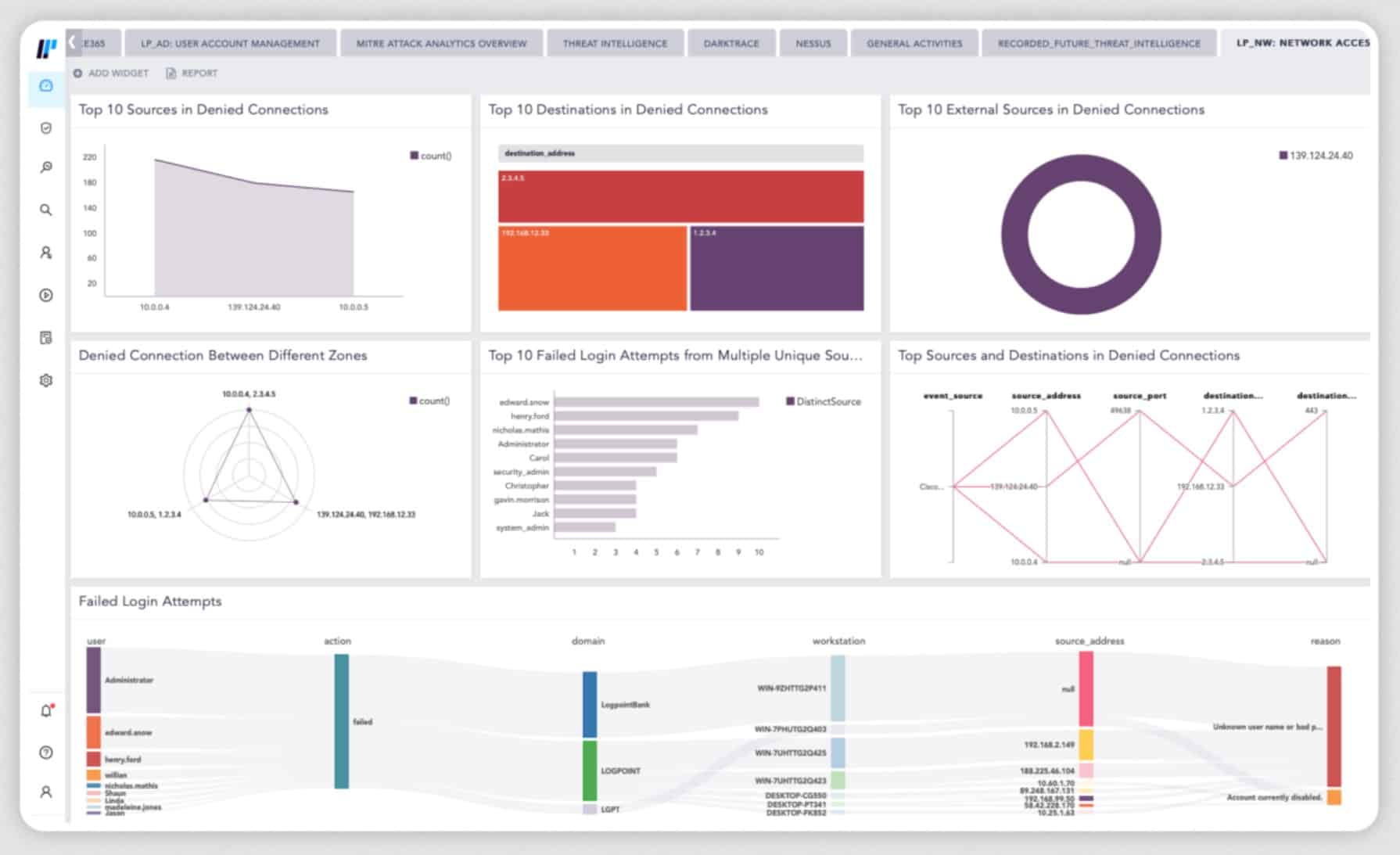
Responses can be automated by playbooks. The exact degree of automation is up to you and the SOAR service in the package means that secondary information can be fed in from more than 25,000 third party tools as part of the rule set for triggering a response. Those responses are implemented by updating your security tools or sending instructions. This will involve interactions with the access rights manager (ARM), firewalls, and on-device AVs. Logpoint can also generate alerts and tickets for your Service Desk system.
Pros:
- Insider Threat Detection: Specializes in detecting both external intruder threats and internal insider threats to enhance security.
- Threat Intelligence Feed: Integrates a threat intelligence feed for staying updated on the latest security threats.
Cons:
- No Free Trial Period: The absence of a free trial period may limit the ability of potential users to explore and evaluate the platform before making a commitment.
Logpoint has three deployment options, which gives it a wide audience. It can be installed on Ubuntu Linux for on-premises operations or you can get it as a service on the AWS Marketplace. The company also offers Logpoint as a SaaS platform. There is no free trial, but you can request a demo to assess the package
10. SolarWinds Security Event Manager
Tested on: Windows Server
Best for: Small to Medium Businesses: SolarWinds offers an affordable and user-friendly SIEM solution, ideal for smaller organizations looking to enhance their security posture without significant investment, it medium-sized organizations and even larger ones may still find value here.
In terms of entry-level SIEM tools, SolarWinds Security Event Manager (SEM) is one of the most competitive offerings on the market. The SEM embodies all the core features you’d expect from an SIEM system, with extensive log management features and reporting. SolarWinds’ detailed real-time incident response makes it a great tool for those looking to exploit Windows event logs to actively manage their network infrastructure against future threats.
Key Features:
- Simple Log Filtering: Features straightforward log filtering, eliminating the need to learn a custom query language.
- Dozens of Templates: Provides dozens of templates, enabling administrators to start using SEM with minimal setup or customization.
- Log Manager: Acts as a log manager with the capability to forward records to third-party tools.
- Historical Analysis: Provides tools for historical analysis, aiding in the identification of past security incidents
Unique feature:
This SolarWinds package runs on Windows Server and can be partnered by other SolarWinds tools to form a suite. The log manager in the package is able to collect log messages from all active components of an IT system, not just SolarWinds products.
Comparitech SupportScore
Based on our multi-point analysis of the key signals for effective customer and product support, SolarWinds received an 89/100 SupportScore. This score means that SolarWinds is most likely to offer the range of customer and product support almost any of its customers might need. Although its weakest area is in employee job satisfaction, this may not impact the specific team providing customer service and product support.
We recommend you book a demo or discovery call directly with SolarWinds and ask more about its customer service, product support, and company culture.
Why do we recommend it?
The SolarWinds Security Event Manager is an on-premises service that is able to reach out to cloud platforms as well. This service can unify the monitoring of multiple sites and cloud services from its base on one of your servers.
One of the best things about the SEM is its detailed and intuitive dashboard design. The simplicity of the visualization tools makes it easy for the user to identify any anomalies. As a welcome bonus, the company offers 24/7 support, so you can contact them for advice if you run into an error.
SolarWinds Security Event Manager provides methods to collect, collate, and consolidate log messages as well as providing automated and manual analysis systems. This is an on-premises package that will gather log messages from many different services and devices, including network switches and routers, firewalls, operating systems, security software on endpoints, and typical applications, such as Web servers and file transfer utilities. The log messages are analyzed automatically as soon as they arrive and they are also filed. Log files are stored in a meaningful folder structure, which makes past log messages easy to locate and load into the Security Event Manager’s data viewer for manual analysis.
Pros:
- Live Anomaly Detection: Utilizes real-time anomaly detection to identify abnormal patterns or behavior.
- Enterprise-Focused SIEM: Designed with an enterprise focus and offers a wide range of integrations.
- 30-day Free Trial: Offers a 30-day free trial period, allowing users to explore and evaluate the product.
Cons:
- Advanced SIEM for Professionals: Targeted as an advanced SIEM product for professionals, which may require time to fully learn and master the platform.
The software for SolarWinds Security Event Manager installs on Windows Server. Pricing is scaled to account for capacity requirements but the starting price is $2,877, so this isn’t a tool for small businesses. Get a 30-day free trial.
11. Fortinet FortiSIEM
Tested on: Hardware, VMware, Hyper-V, KVM, OpenStack, and AWS
Best for Medium to Large Businesses: FortiSIEM combines network monitoring and security management, catering to organizations that require integrated solutions for complex IT environments.
Fortinet FortiSIEM can be used as a standalone tool or combined with other Fortinet tools to create a full enterprise protection system called the Fortinet Security Fabric. Fortinet has an excellent reputation in the field of cybersecurity, and its hardware appliances are custom-built with specially designed microchips to provide high-speed data processing. The FortiSIEM can be included on a hardware device, or you can run it as a virtual appliance. The system is also offered as a service on AWS.
Key Features:
- UEBA Features: This boosts the platform’s ability to detect anomalies and potential security threats based on user and entity behavior.
- Attack Responses: The platform includes features for attack responses, allowing for automated actions to mitigate and respond to security incidents.
- Compliance Reporting: FortiSIEM includes compliance reporting features that assist organizations in adhering to regulatory requirements and industry standards.
- Options for Virtual Networks: Offers options to implement security measures specifically designed for virtual networks, catering to the needs of virtualized environments.
Comparitech SupportScore
Based on our multi-point analysis of the key signals for effective customer and product support, Fortinet earned a 95/100 SupportScore. This score means that Fortinet is most likely a high-quality service to consider if your company needs detailed and hands-on customer support and a product that is also well-supported for the long term. None of that is guaranteed to be true or guaranteed to be what you or current customers personally experience, however.
We recommend that you connect with Fortinet’s team to dig deeper into how it supports its product and its customers.
Why do we recommend it?
Fortinet is a leading provider of system security solutions and deserves to be included in any list of security service categories in which they have products. Including FortiSIEM as part of a SASE solution or adding it to the FortiGate firewall provides optimum security.
Fortinet FortiSIEM will collect and store log messages, which is an essential task for compliance with many data protection standards. FortiSIEM provides compliance reporting for PCI-DSS, HIPAA, GLBA, and SOX. Another important feature of this system is that it can be set up to implement automated responses to shut down the threats that it detects.
Pros:
- Choice of Data Processing Volumes: Fortinet FortiSIEM provides users with the flexibility to choose data processing volumes based on their specific needs and requirements.
- Security Assurance: FortiSIEM can be seamlessly combined with a firewall and traffic shaping service, providing a comprehensive security solution for network management.
Cons:
- Higher-End Pricing: FortiSIEM prices are positioned at the higher end of the market, potentially making it less accessible for organizations with budget constraints.
The expansion of Fortinet’s implementation model to include virtual appliances enables the business to appeal to a wider audience than its original and still favored deployment system based on hardware appliances. The company offers a demo of its Fortinet SIEM and other products.
12. Splunk Enterprise Security
Tested on: Windows, Windows Server, and Linux
Best for: Large Enterprises: Splunk offers extensive data analytics and security monitoring capabilities, making it suitable for large organizations with significant data volumes and complex security requirements
Splunk is one of the most popular SIEM management solutions in the world. What sets it apart from the competition is that it has incorporated analytics into the heart of its SIEM. Network and machine data can be monitored on a real-time basis as the system scours for potential vulnerabilities and can even point to abnormal behavior. Enterprise Security’s Notables function displays alerts that can be refined by the user.
Key Features:
- Real-Time Network Monitoring: This feature allows organizations to actively track and respond to events as they occur.
- Asset Investigator: Asset Investigator feature enables detailed analysis and investigation of assets within the network.
- Historical Analysis: Facilitates historical analysis, allowing users to examine and analyze past events and trends.
- Easy Customization: Features an excellent user interface that is highly visual and offers easy customization options.
Comparitech SupportScore
Based on our multi-point analysis of the key signals for effective customer and product support, Splunk earned a 95/100 SupportScore. This score reflects Splunk’s strong showing against our 5-point signal analysis of the company data that can impact product and customer support capabilities. There is a strong chance that Splunk will offer exceptional customer support and product support, but this may vary across its customer base.
We recommend you book a meeting with Splunk’s team to learn more about what its customer support capabilities look like in real time.
Why do we recommend it?
Splunk Enterprise Security is a very flexible package that provides you with the base Splunk package for data analysis. You can create your own threat-hunting searches, analysis functions, and automated defense rules, as well as use the out-of-the-box rules that are included with this plan.
Regarding responding to security threats, the user interface is incredibly simple. When conducting an incident review, the user can start with a basic overview before clicking through to in-depth annotations of past events. Likewise, the Asset Investigator does a fine job of flagging malicious actions and preventing future damage.
Pros:
- Behavior Analysis for Threat Detection: Utilizes behavior analysis to detect threats that may go unnoticed through traditional log analysis methods, enhancing the platform’s threat detection capabilities.
- Available for Linux and Windows: Offers compatibility with both Linux and Windows operating systems, providing flexibility in deployment.
Cons:
- Non-Transparent Pricing: The pricing structure is not transparent and requires a quote from the vendor, which may make it challenging for organizations to assess the cost beforehand.
- More Suited for Large Enterprises: While suitable for large enterprises, the extensive features and potentially higher costs may make it less ideal for smaller organizations with simpler security needs.
You need to contact the vendor for a quotation so it’s clear that this is a scalable platform designed with larger organizations in mind. There is also a SaaS version of this Splunk service called Splunk Security Cloud. This is available for a 15-day free trial. The trial version of the system is limited to processing 5 GB of data per day.
13. Rapid7 InsightIDR
Tested on: Cloud/SaaS
Best for Medium to Enterprise-Level Businesses: Rapid7 provides user behavior analytics and incident detection, ideal for organizations seeking advanced threat detection without the overhead of traditional SIEM solutions.
Rapid7 InsightIDR is headlined as both an XDR and a SIEM. This cloud-based system installs agents on your site to collect and upload activity data. The system is supported by a team of security analysts who supplement the insights of the detection software. The tool also gets a threat intelligence feed, which sharpens threat detection toward current attack vectors.
Key Features:
- Endpoint Protection: InsightIDR includes features for endpoint protection, addressing security concerns at the individual device level.
- Network Security Scanning: The platform offers network security scanning capabilities for the identification and mitigation of vulnerabilities within the network.
- UEBA Capabilities: Incorporates UEBA features for the detection of anomalous behaviors that may indicate security threats.
- SOAR Capabilities: Incorporates SOAR capabilities that helps to streamline security processes and response actions.
Comparitech SupportScore
Based on our multi-point analysis of the key signals for effective customer and product support, Rapid7 earned a 94/100 SupportScore. This score means that Rapid7 scored well in every category we assess in predicting the likelihood of quality customer and product support. That will likely be the case with Rapid7 if you choose them as a vendor of choice, but it’s not guaranteed.
We recommend you contact Rapid7 directly to learn more about the effectiveness of its customer and product support.
Why do we recommend it?
InsightIDR is more of a “platform” than a “package” because it includes a collection of security systems. It provides multiple threat detection methods and also exploits the power of your existing security systems, such as firewalls and access rights managers. Threat response can be automated for immediate action.
This system combines several threat detection strategies. The threat intelligence feed provides indicators of compromise (IoCs), which are the foundations of a signature-based detection approach. The system also includes a user and entity behavior analytics (UEBA) module, which records a baseline of normal behavior for each user account and device – this is an anomaly-based detection method.
While collecting event data from each endpoint, this tool also gathers live network activity information. This combination provides the classic source data for a SIEM. The threat detection process is performed in the cloud on Rapid7 servers, thus lightening the processing burden on your servers.
Responses can be implemented through third-party tools. The InsightIDR service writes new firewall rules to block traffic from suspicious external sources and it can also instruct access rights managers to suspend accounts that seem to have been compromised.
The InsightIDR console helps system administrators create honeypots and traps to lure intruders into a dead end where they can be identified and blocked. The service is a time-saver and it creates fake data files and accounts with weak security as bait.
See also: How to Create a Honeypot to Catch Intruders
Pros:
- Deception Technology: Provides deception technology utilities, enhancing the platform’s ability to detect and deceive potential attackers and improving overall security.
- Automated Threat Response: Provides automated threat response mechanisms and comprehensive action logging for efficient incident response and analysis.
Cons:
- Cannot Protect Offline Systems: Systems that are completely disconnected from the internet may not be protected, potentially impacting security coverage for offline environments.
InsightIDR provides compliance auditing and threat protection. It collects and stores system log messages, retaining them live for three months and then keeping them in an archive for 10 months. Archived files can be revived for compliance auditing.
You can get a 30-day free trial of Rapid7 InsightIDR.
See also: The Best HIDS
14. LogRhythm (Exabeam) NextGen SIEM Platform
Tested on: Windows, appliance, or cloud
Best for Medium to Enterprise-level Businesses: LogRhythm provides comprehensive security analytics and incident response capabilities, catering to organizations that need robust security intelligence solutions.
LogRhythm (now part of Exabeam) has long established itself as a pioneer within the SIEM solution sector. From behavioral analysis to log correlation and artificial intelligence for machine learning, this platform has it all.
Key Features:
- Sleek Interface: Features a visually appealing and highly customizable interface, enhancing user experience.
- Log File Management: Simplifies log file management through easy-to-use wizards, making it a user-friendly tool for setting up log collection and other security tasks.
- Guided Analysis: Provides guided analysis features, which can assist users in understanding and interpreting security data, aiding in effective incident response.
Why do we recommend LogRhythm?
LogRhythm NextGen SIEM is a cloud-based service very similar to Datadog, Logpoint, LevelBlue, and QRadar. This tool is equally proficient to its rivals, so we couldn’t leave it out of our list of recommendations.
The system is compatible with a massive range of devices and log types. In terms of configuring your settings, most activity is managed through the Deployment Manager. For example, you can use the Windows Host Wizard to sift through Windows logs.
This makes it much easier to narrow down on what is happening on your network. At first, the user interface does have a learning curve, but the extensive instruction manual helps. The icing on the cake is that the instruction manual actually provides hyperlinks to various features in order to aid you in your journey.
Pros:
- User-Friendly Setup: Utilizes simple wizards for log collection and security tasks, making it accessible for beginners.
- AI and ML Integration: Leverages AI and machine learning for behavior analysis, enhancing overall threat detection capabilities.
Cons:
- Lack of Trial Option: The absence of a trial option may be a drawback for users who prefer to assess the software before committing to a purchase.
- Limited Cross-Platform Support: This limits versatility for organizations with diverse IT environments.
The price tag of this platform makes it a good choice for medium-sized organizations looking to implement new security measures.
15. LevelBlue (formerly AT&T Cybersecurity)
Tested on: Cloud/SaaS
Best for Small to Medium-sized Businesses: LevelBlue offers managed security services with SIEM capabilities, ideal for smaller organizations seeking outsourced security expertise.
As one of the more competitively priced SIEM solutions on this list, LevelBlue is a very attractive offering. At its core, this is a traditional SIEM product with built-in intrusion detection, behavioral monitoring, and vulnerability assessment. LevelBlue has the onboard analytics you would expect from a scalable platform.
Key Features:
- Intrusion Detection: Detects and alerts on potential security breaches and unauthorized access attempts.
- Behavior Monitoring: Monitors the behavior of systems and users to identify anomalous activities indicative of security threats.
- Open Threat Exchange: Utilizes a collaborative platform for sharing threat intelligence and information with other users.
- Scanning and Assessment: Scanns log files and provide vulnerability assessment reports based on devices and applications scanned on the network.
Why do we recommend it?
LevelBlue offers a comprehensive Security Information and Event Management (SIEM) solution that integrates multiple security capabilities into a single platform. This unified approach simplifies threat detection, incident response, and compliance management, reducing the complexity and cost associated with deploying and managing multiple security tools.
Additionally, LevelBlue provides continuous, curated threat intelligence from its Security Research Team, ensuring that users stay ahead of emerging threats.
Comparitech SupportScore Methodology
Our SupportScore assesses each B2B software vendor's likelihood of being able to effectively provide high-quality product implementation, as well as ongoing customer support and product support. While user experiences may vary, this analysis factors in 5 key signals that commonly influence a vendor's ability to support its products and customers.
Each vendor is different, so we recommend you utilize this data primarily as a way to encourage more meaningful conversations with chosen vendors. Our SupportScore factors in the following data:
- Total number of employees
- Revenue/funding
- Employee job satisfaction
- Identifiable customer success teams or employees
- Self-service documentation
These data points are calculated on a 0-100 scale, with variable weights based on category importance, and then averaged to produce an overall vendor score.
Check out our SupportScore Methodology post for a more detailed explanation of the SupportScore and why we believe it's a significantly important value-add while researching software vendors for your business.
What is SIEM?
SIEM (Security Information and Event Management) is an essential cybersec tool that collects and analyzes log data from your organization’s IT environment. It’s a centralized hub that can detect, analyze, and respond to security incidents. This helps your business proactively avoid damaging threats, including ransomware gangs.
Key Benefits of SIEM:
- Proactive Threat Detection: Identifies unusual behavior patterns to uncover potential attacks before they escalate.
- Centralized Visibility: Provides a unified view of security data across an organization’s infrastructure.
- Streamlined Incident Response: Enables faster reaction times to mitigate the impact of security breaches.
- Regulatory Compliance: Simplifies adherence to cybersecurity regulations with detailed log management and reporting tools.
- Enhanced Security Posture: Combines insights from historical data and real-time activity to fortify defenses.
Case study on the need for SIEM: Stuxnet
The now historically damaging malware Stuxnet is a prime example of why SIEM software exists and how it can be used to stop zero-day malware as well as other threats. Stuxnet, which Wired called “The World’s First Digital Weapon”:
“Stuxnet, as it came to be known, was unlike any other virus or worm that came before. Rather than simply hijacking targeted computers or stealing information from them, it escaped the digital realm to wreak physical destruction on equipment the computers controlled.”
Stuxnet arrived somewhere between the SIEM 2.0 and SIEM 3.0 eras, meaning many companies may have had SIEM in place, but many did not. Had adequate SIEM been around at the time, Iran’s nuclear fuel enrichment program may not have been ground to a halt.
Political intrigue and cyberweapon conspiracy theories aside, SIEM tools, alongside a robust matrix of intrusion detection systems (IDS), network segmentation, and, of course, regular system updates and patches, would likely have prevented one of the most dangerous pieces of malware from wreaking havoc on companies across the globe.
How SIEM works
SIEM works provides event information by analyzing data and integrating feedback to boost its machine learning algorithms. This improves the system’s ability to recognize and respond to threats in its environment. As it reads data from your network, it better understands the difference between normal and abnormal activity, allowing it to easily detect threats.
Key SIEM features:
- Threat detection and insights: Uses log data to identify attacks and provide a detailed understanding of how and why they occurred
- Adapts to complex IT infrastructures: Critical for modern organizations managing increasingly complex systems
- Addresses zero-day threats: Complements firewalls and antivirus tools by identifying threats that traditional measures miss
- Enhances compliance: Simplifies log management to meet industry-standard regulations and improve network transparency
- Prevents damage: Differentiates between legitimate and malicious activities to enhance system protection and minimize risks
Do SIEM Tools provide dashboards?
Yes, SIEM tools provide dashboards. In fact, the SIEM dashboard is one of the key features that you should be looking for and evaluating as part of your software buying process.
As far as SIEM dashboards go, the most important features include:
- Real-time threat monitoring and alerts: The ability to display and flag potential security threats in real-time
- Log aggregation and analysis: Centralized collection and correlation of log data from multiple sources
- Customization: Flexible interfaces that allow users to tailor views to their needs and priorities
- Threat intelligence integration: Incorporation of external threat data for better context and detection
- Incident response tools: Built-in features for investigating and responding to security incidents efficiently
- Compliance reporting: Automated reports to demonstrate compliance with regulatory standards
- User and entity behavior analytics (UEBA): Insights into unusual user behavior patterns to identify insider threats.
- Drill-down capabilities: Easy navigation from high-level views to detailed logs and event data
- Anomaly detection: AI-driven tools to detect deviations from normal patterns.
- Performance metrics monitoring: Real-time visibility into system performance and health
You purchasing process should take into account whether each tool’s dashboard includes the data you need, or has the ability to include that data.
Why Are SIEM Tools Important?
SIEM tools are important because of their ability to detect and prevent threats within modern organizational IT infrastructure. By analyzing log data from users, devices, and trackers, SIEM provides insights into past attacks, detects ongoing threats, and ensures compliance with industry regulations.
Key features of SIEM:
- Threat detection and insight: Uses log data to identify attacks and provide a detailed understanding of how and why they occurred.
- Adapts to complex IT infrastructures: Critical for modern organizations managing increasingly complex systems.
- Addresses zero-day threats: Complements firewalls and antivirus tools by identifying threats that traditional measures miss.
- Enhances compliance: Simplifies log management to meet industry-standard regulations and improve network transparency.
- Prevents damage: Differentiates between legitimate and malicious activities to enhance system protection and minimize risks.
As IT systems and threats targeting them grow more complex and security threats, SIEM has become a must-have solution. The explosion of zero-day attacks and the limitations of traditional security measures highlight the need for advanced threat detection and response capabilities. Additionally, with increasing regulatory demands, SIEM provides organizations with the type of transparency and compliance assurance they need to safeguard their systems, data, and finances.
Related Posts
The following content offers additional insights on SIEM and network security:
- Everything You Need to Know About SIEM
- Best Free and Open Source SIEM Tools (great for small and medium-sized businesses with a limited budget!)
- SIEM Alert Guide
- Best Managed SIEM Services
- The Best Endpoint Detection and Response Tools


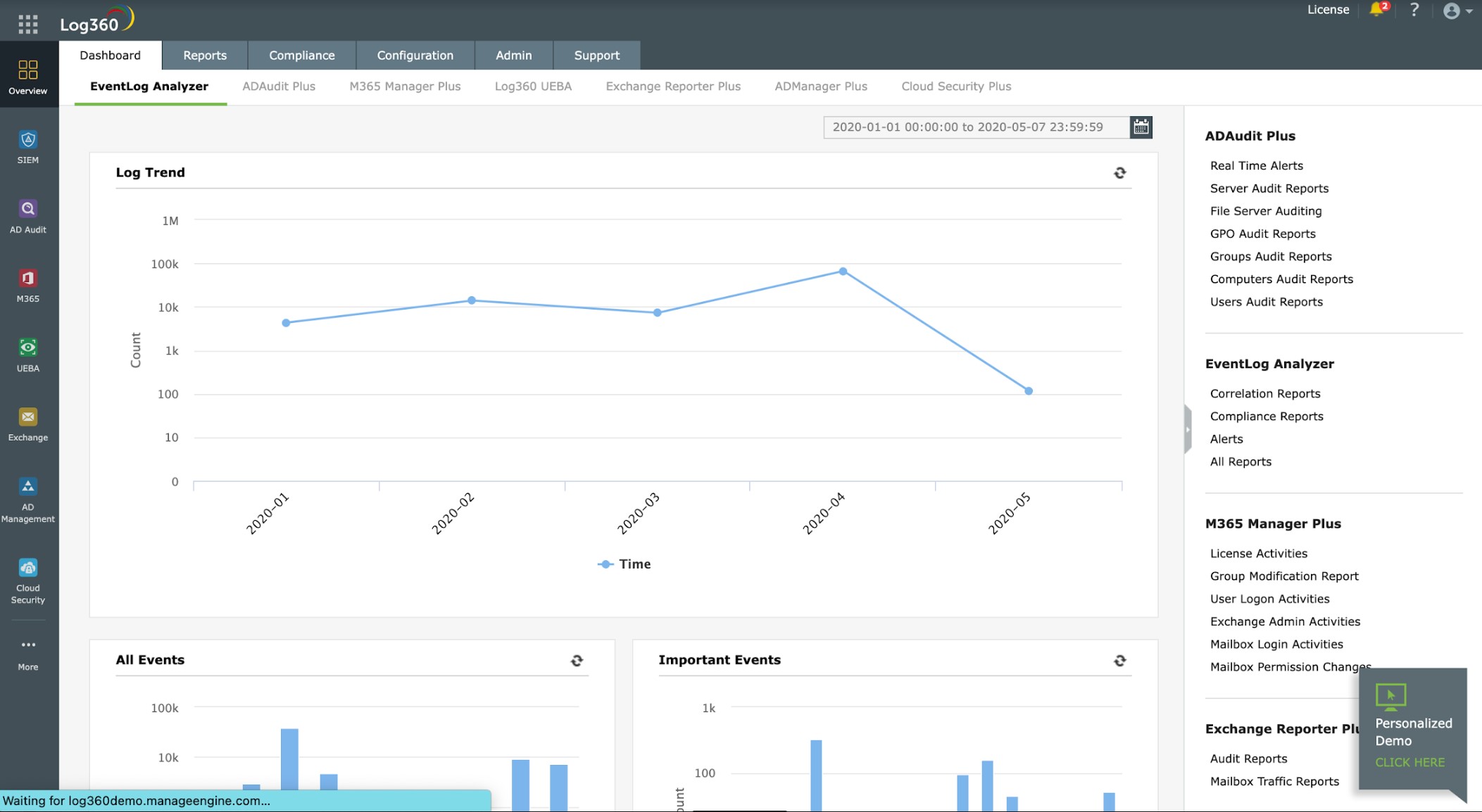
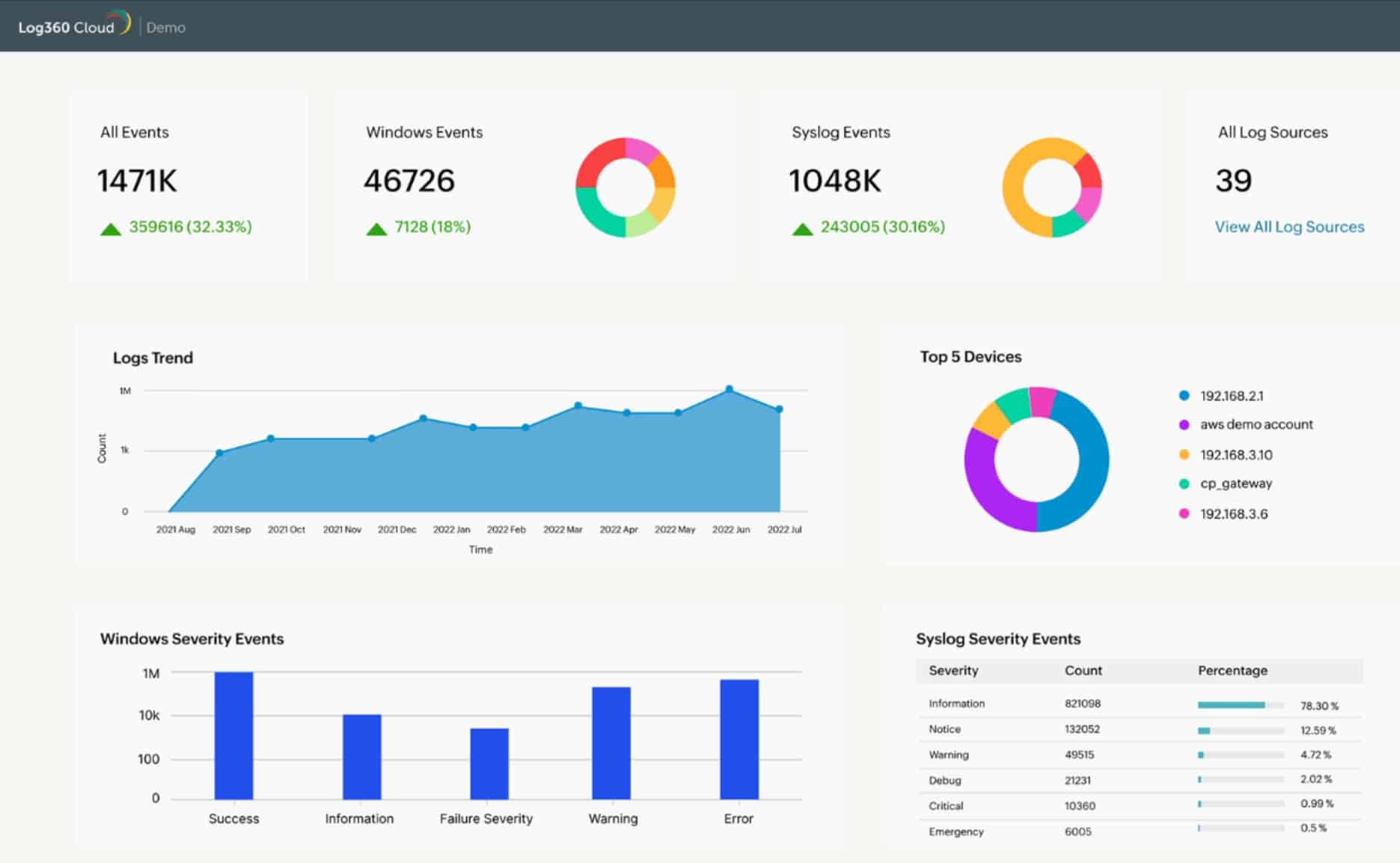
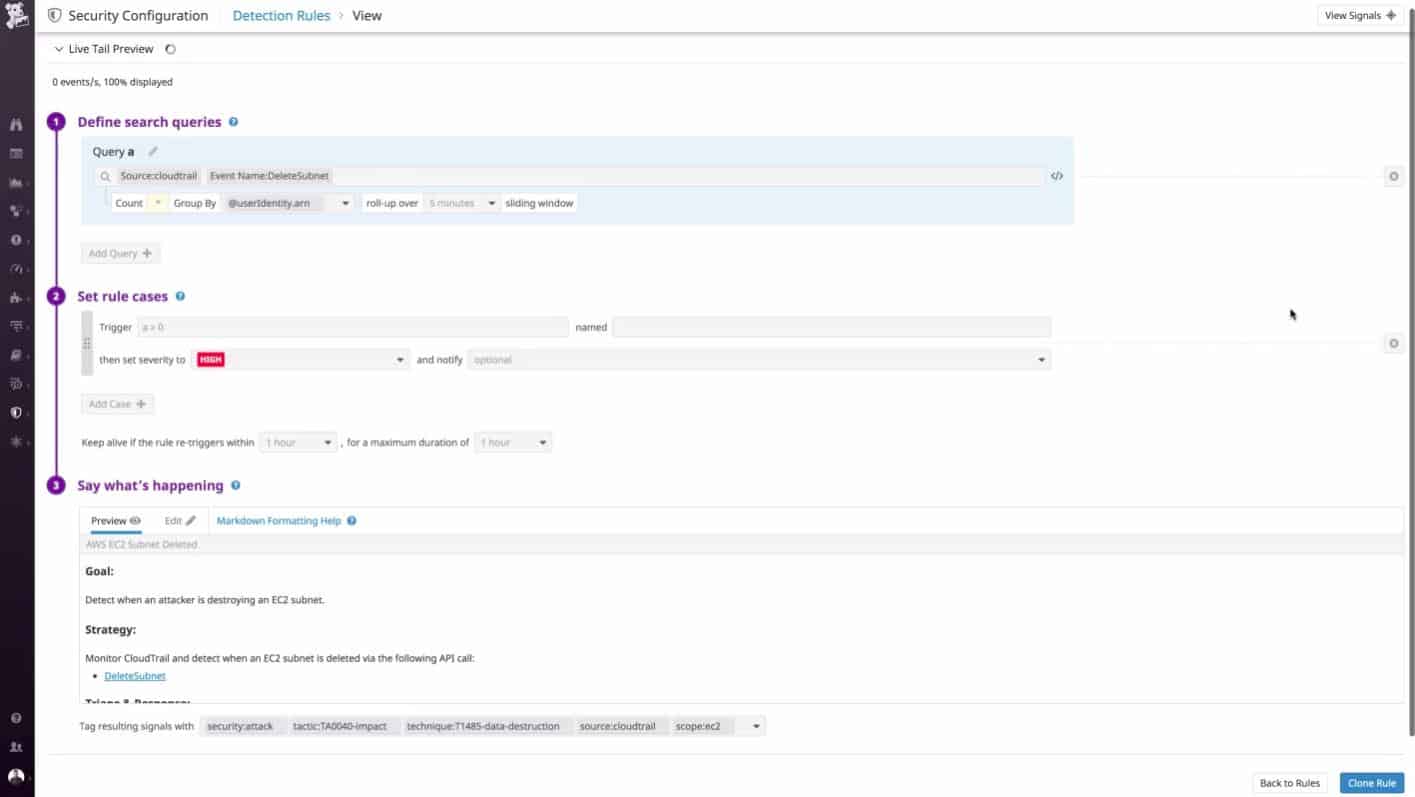
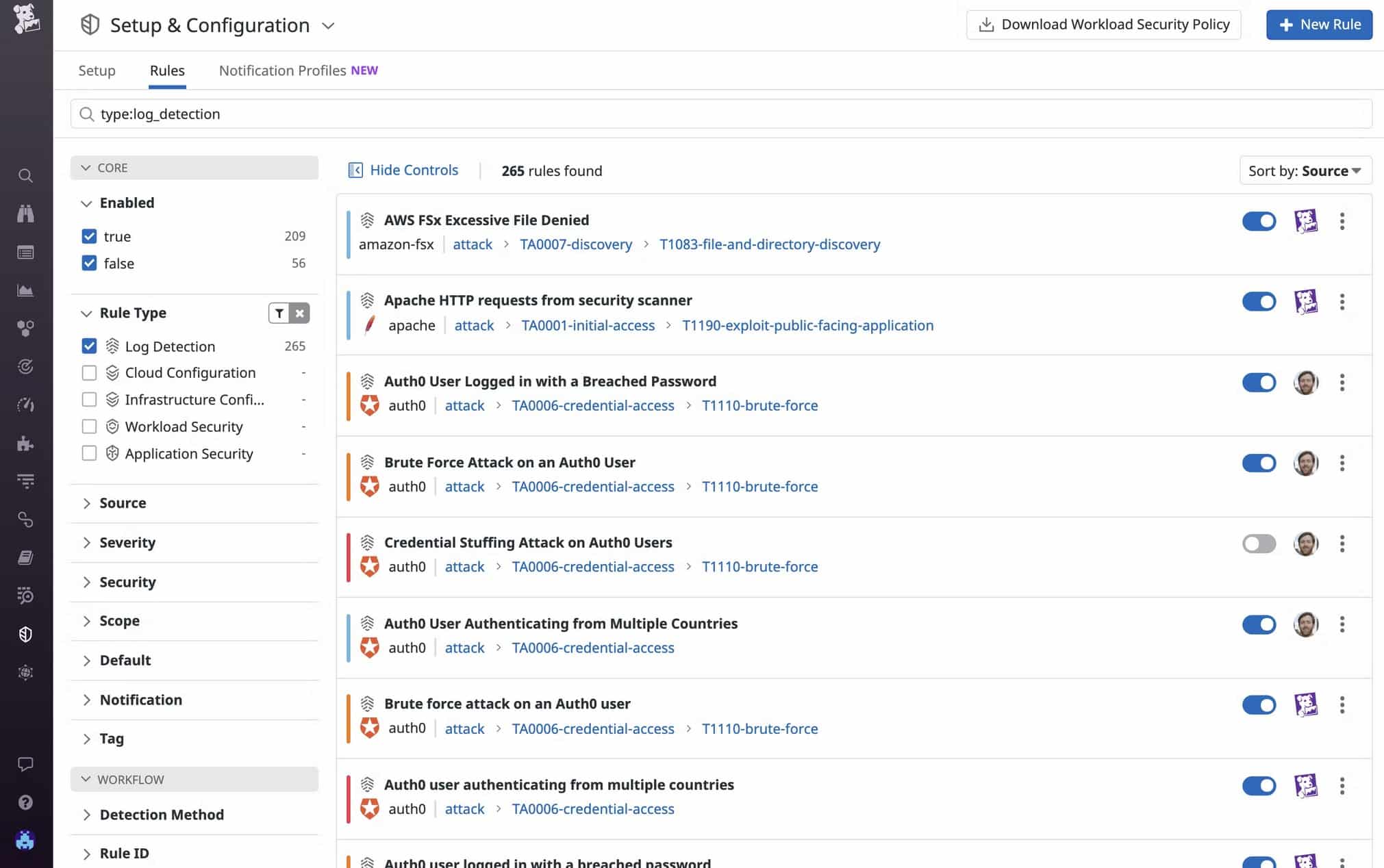
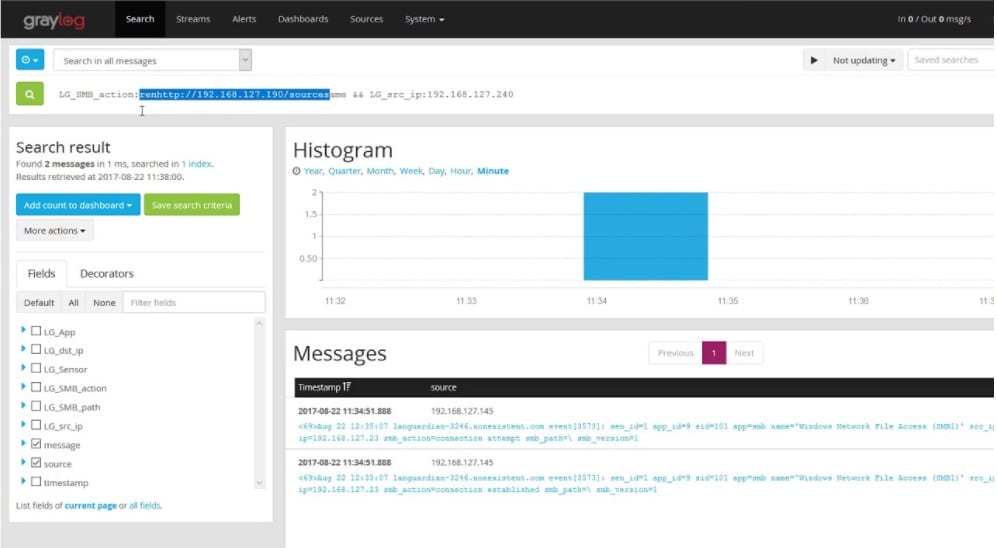
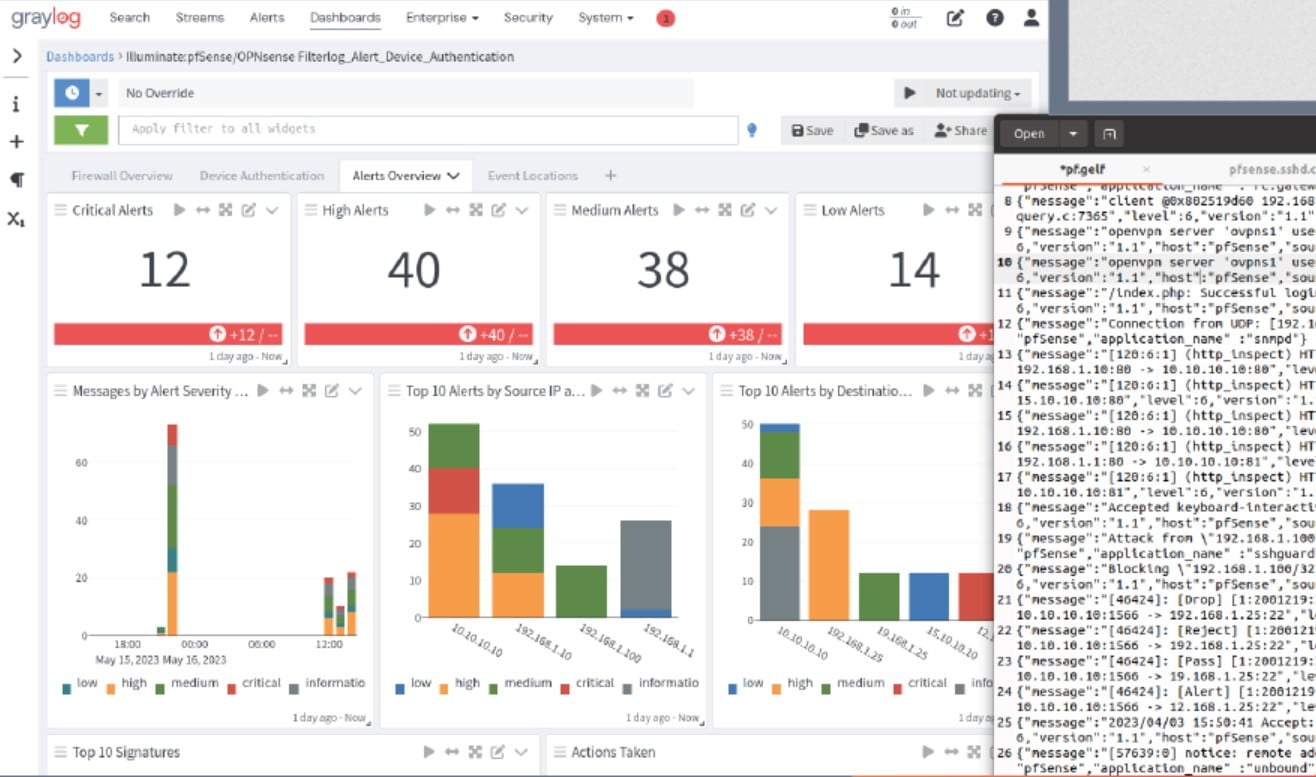
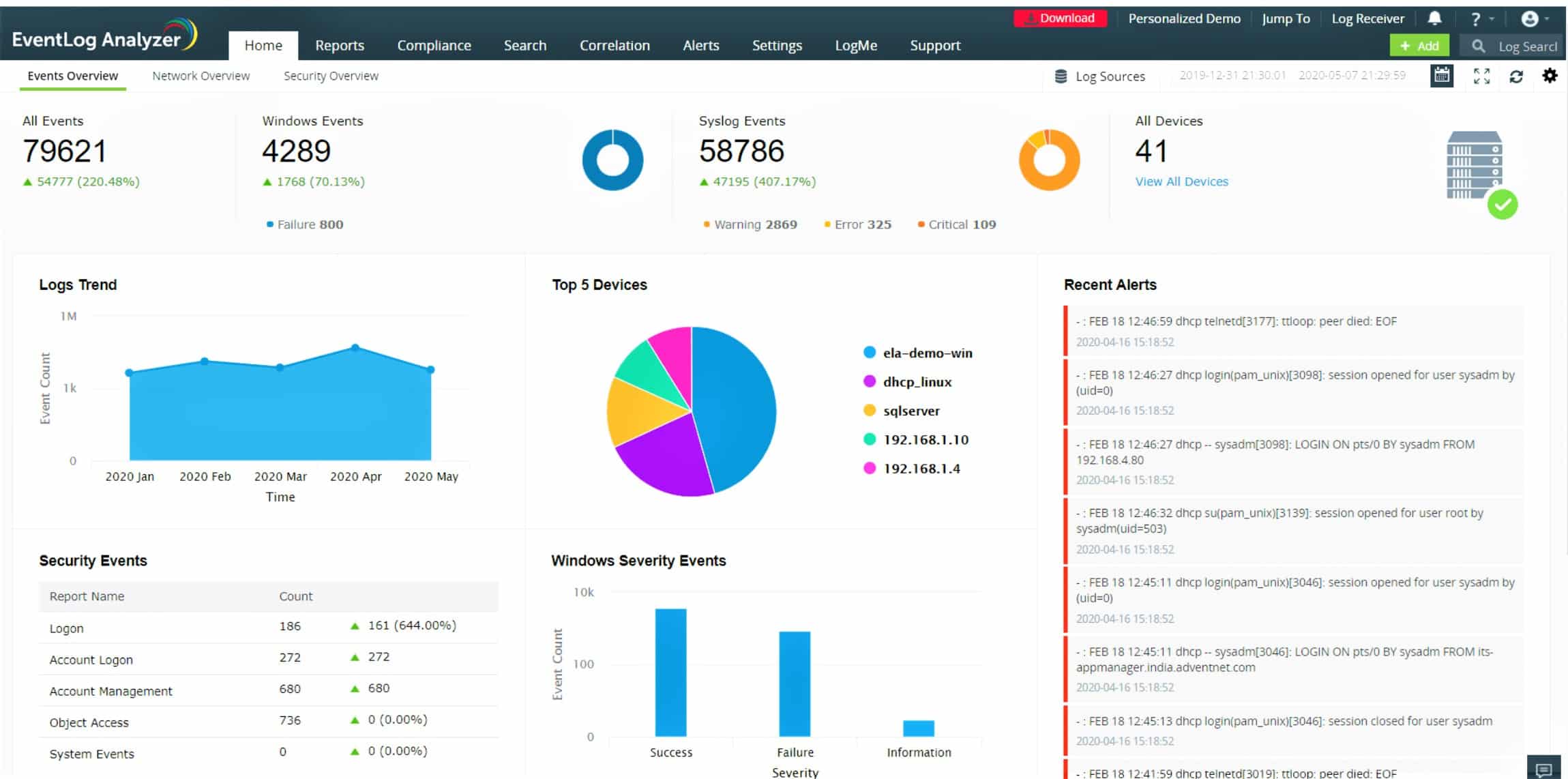
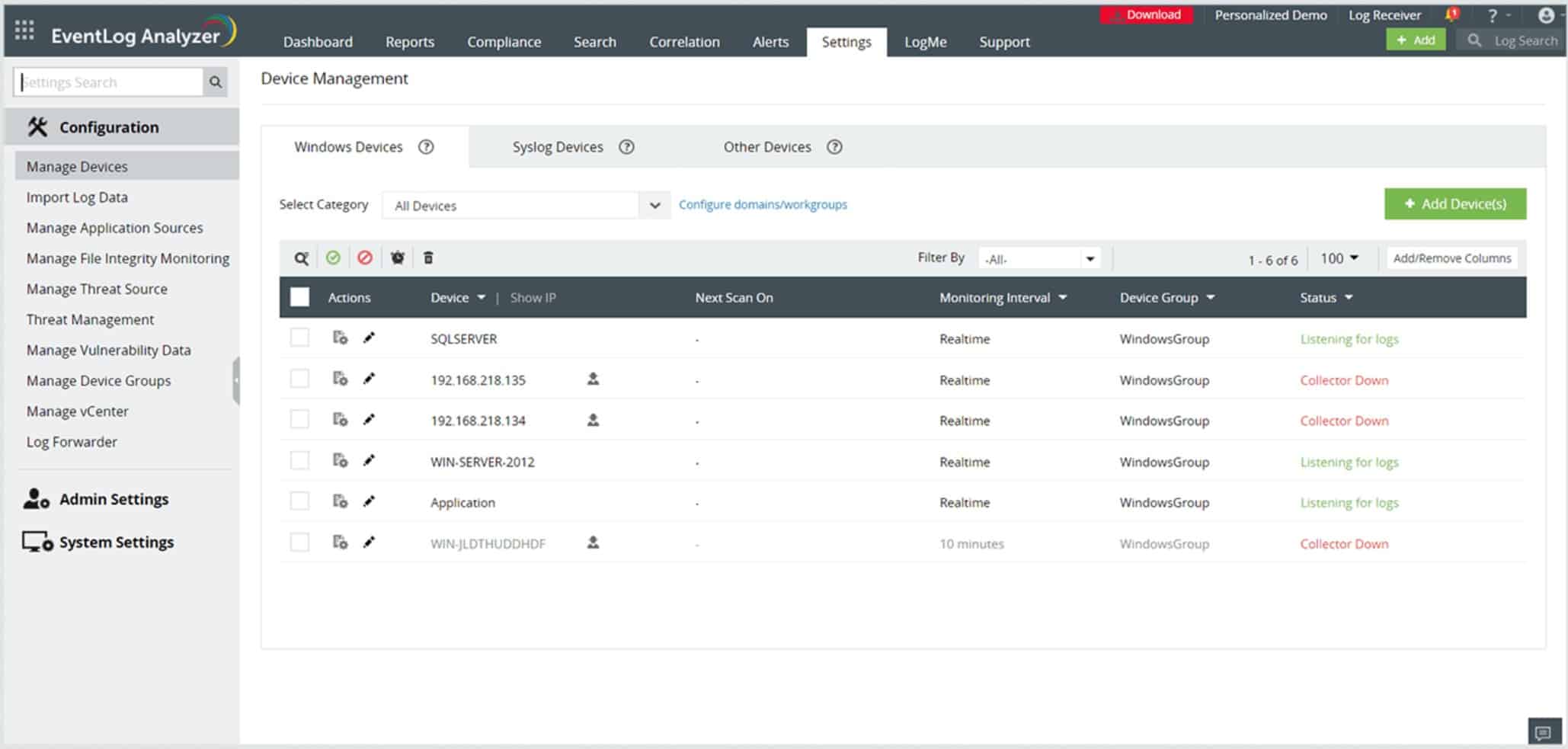
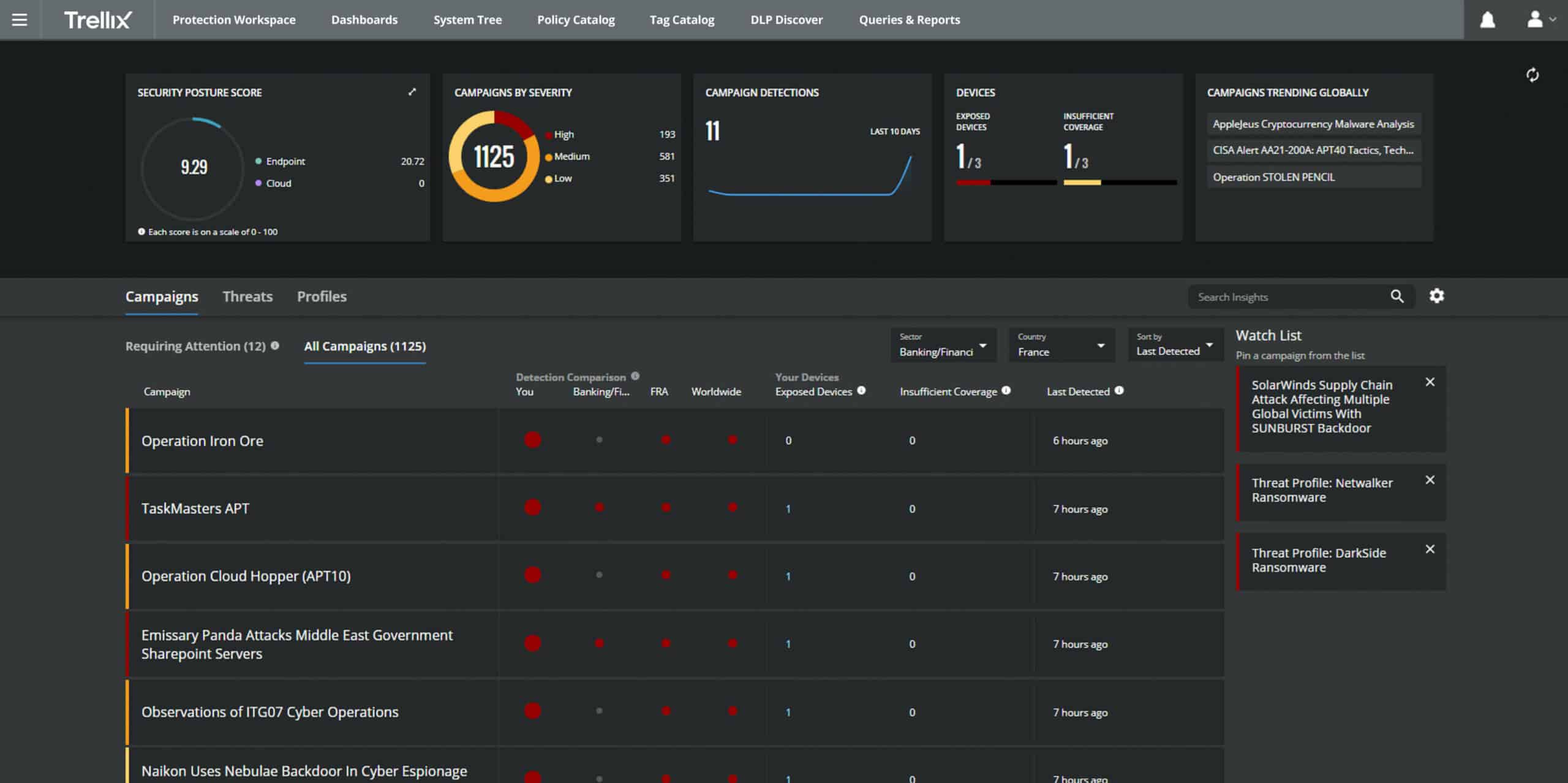
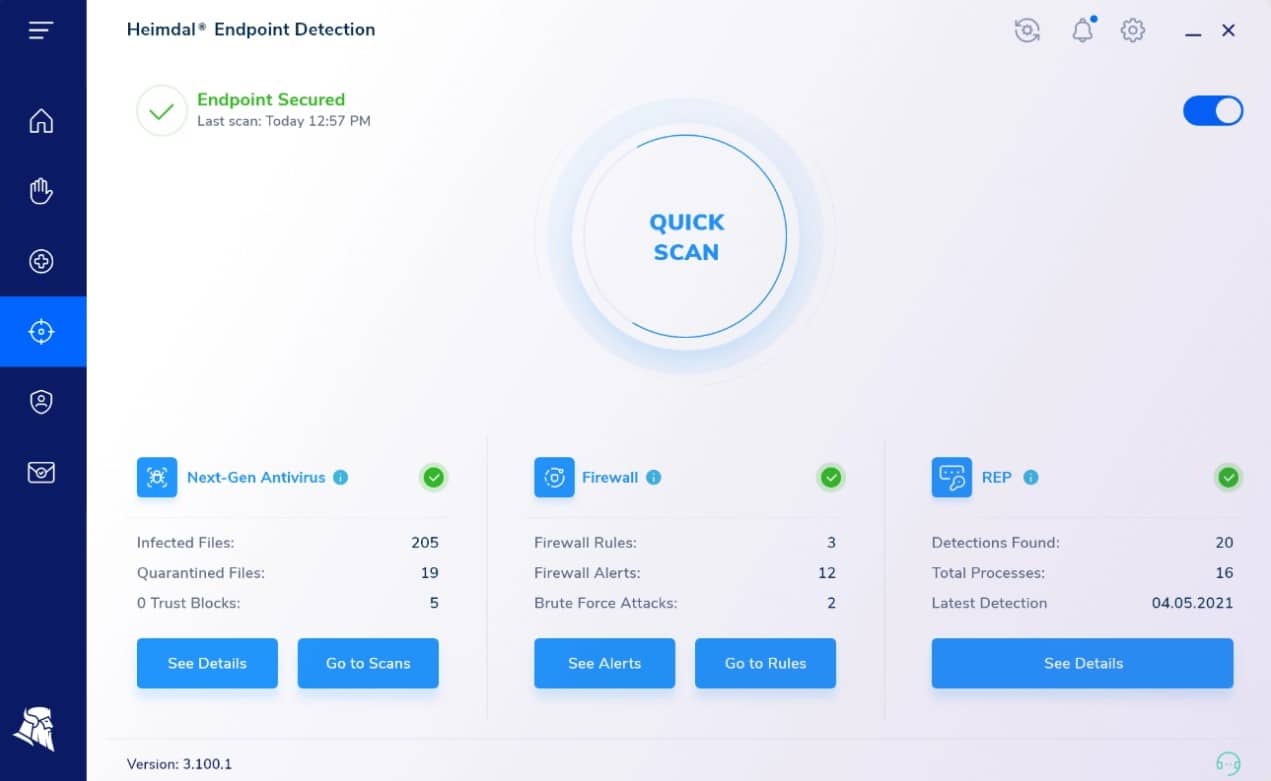
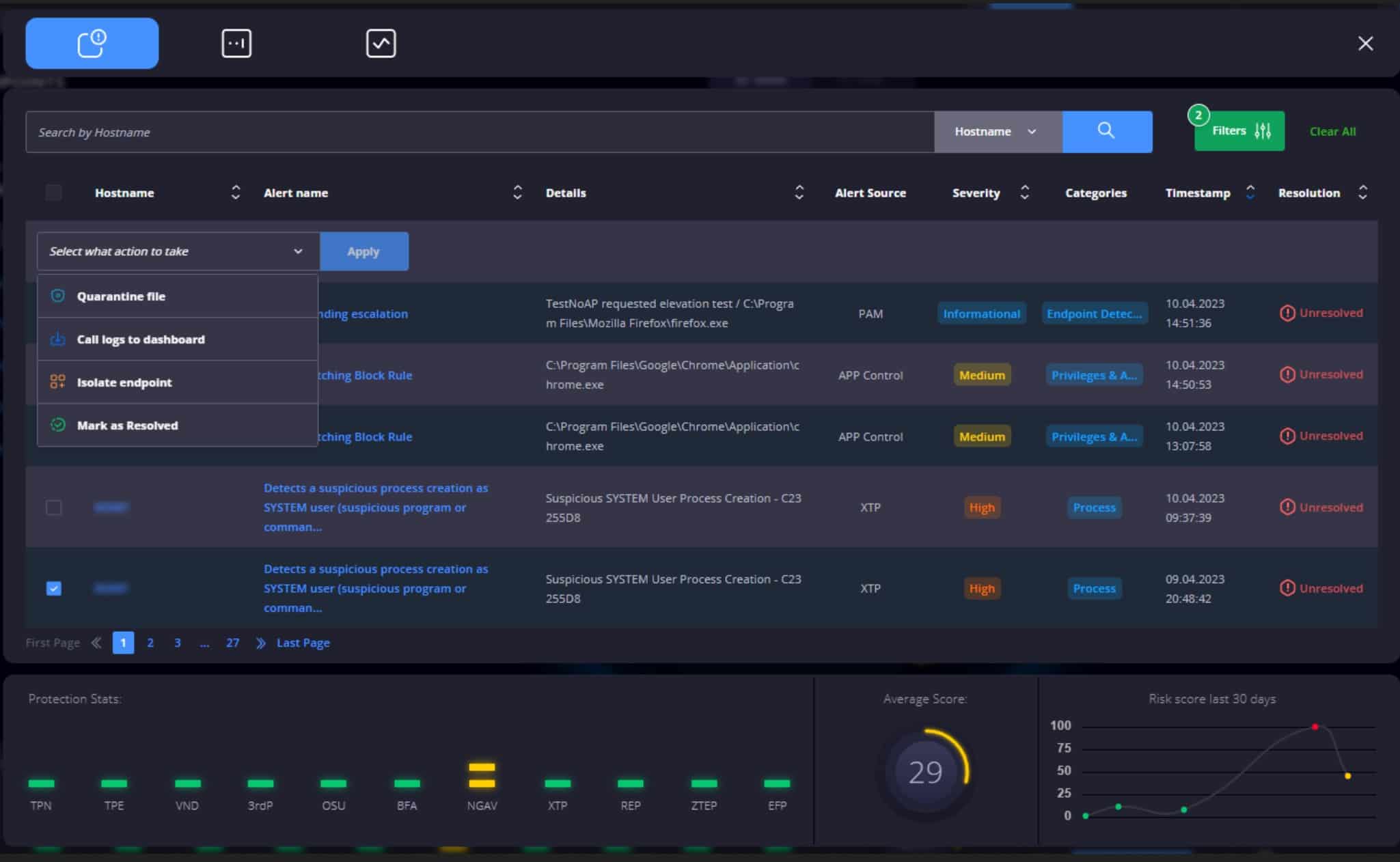


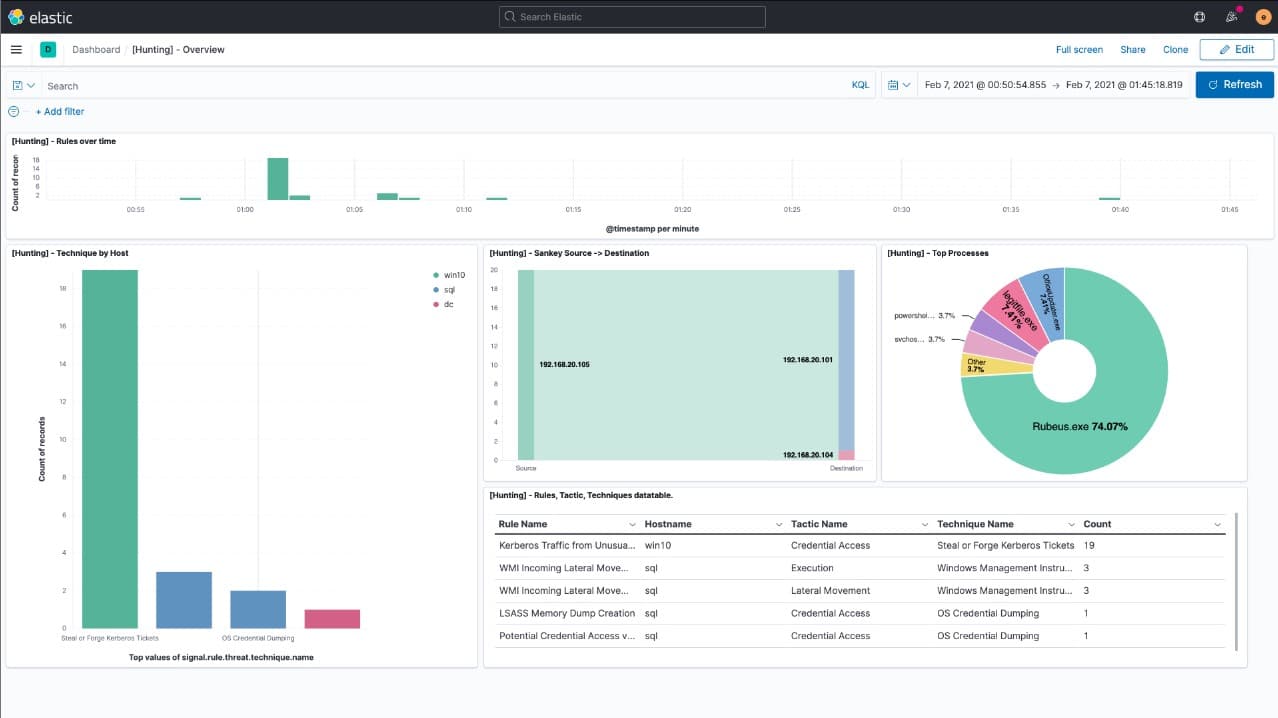
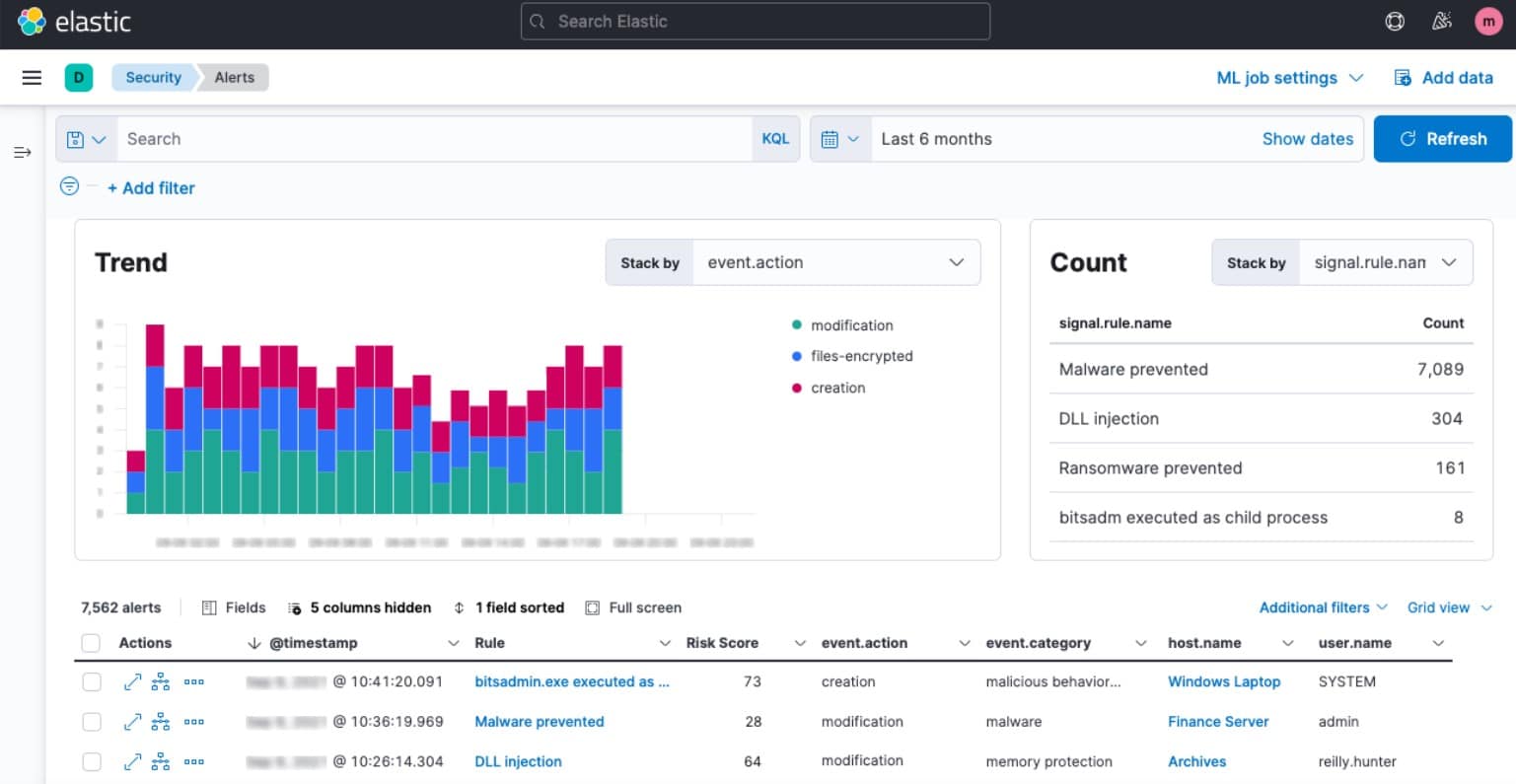
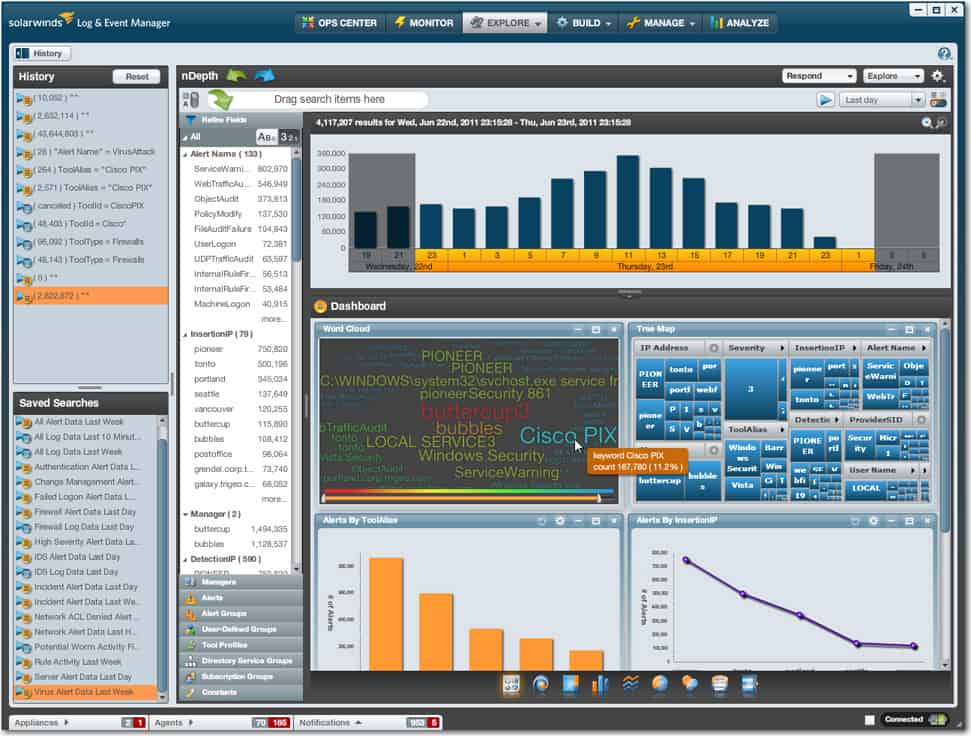
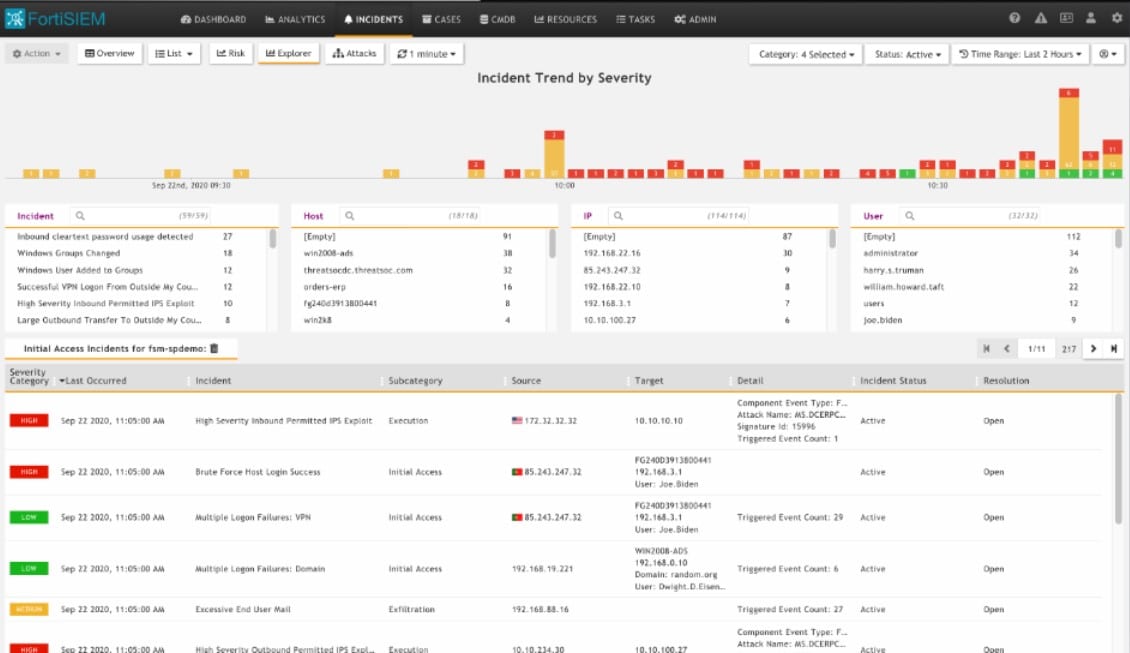
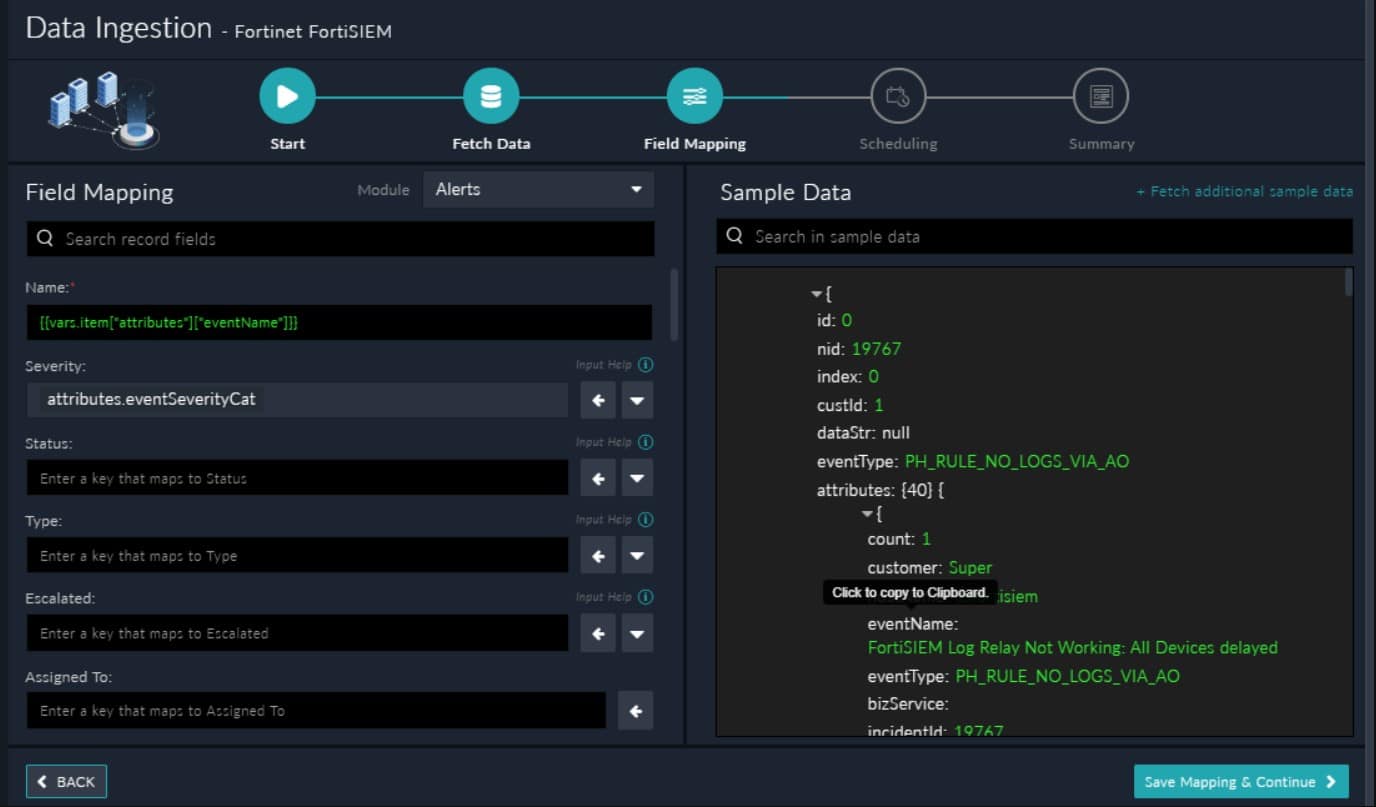
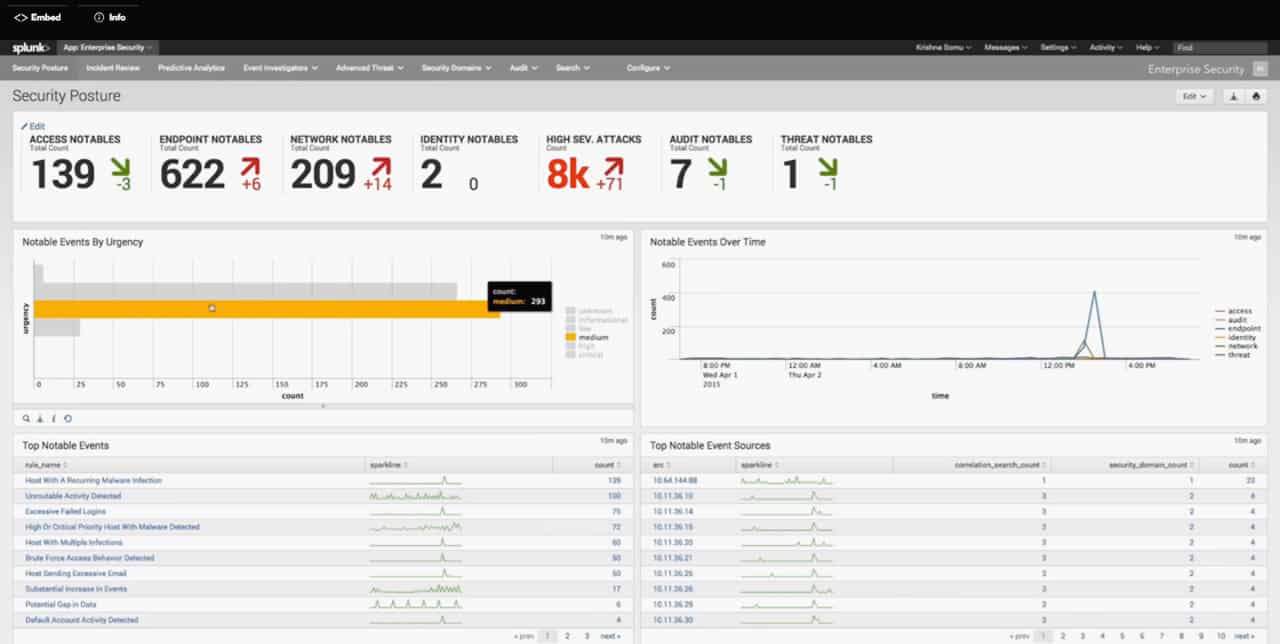
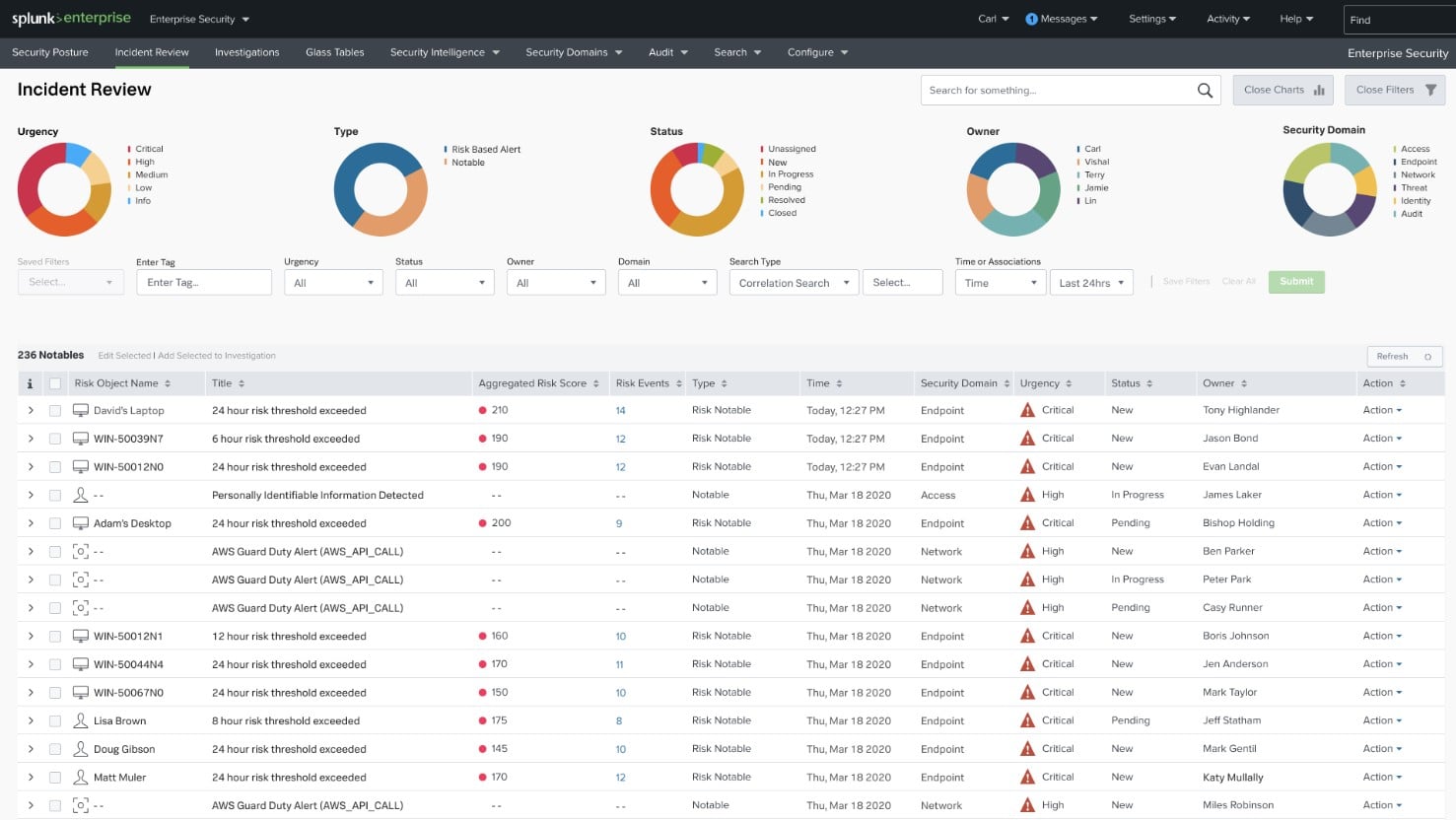
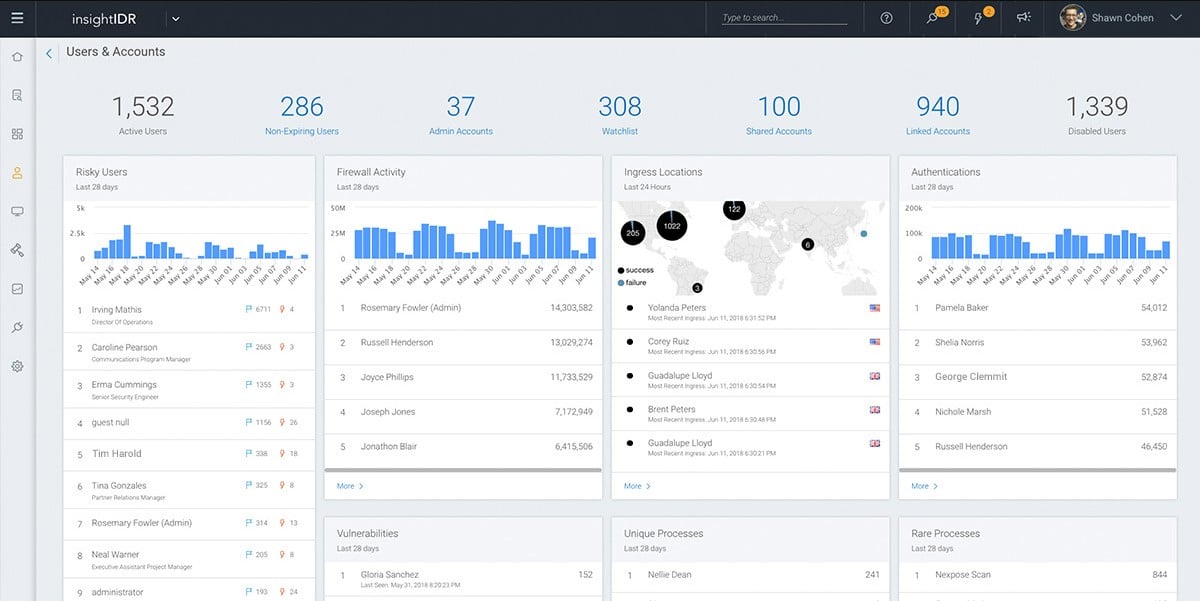
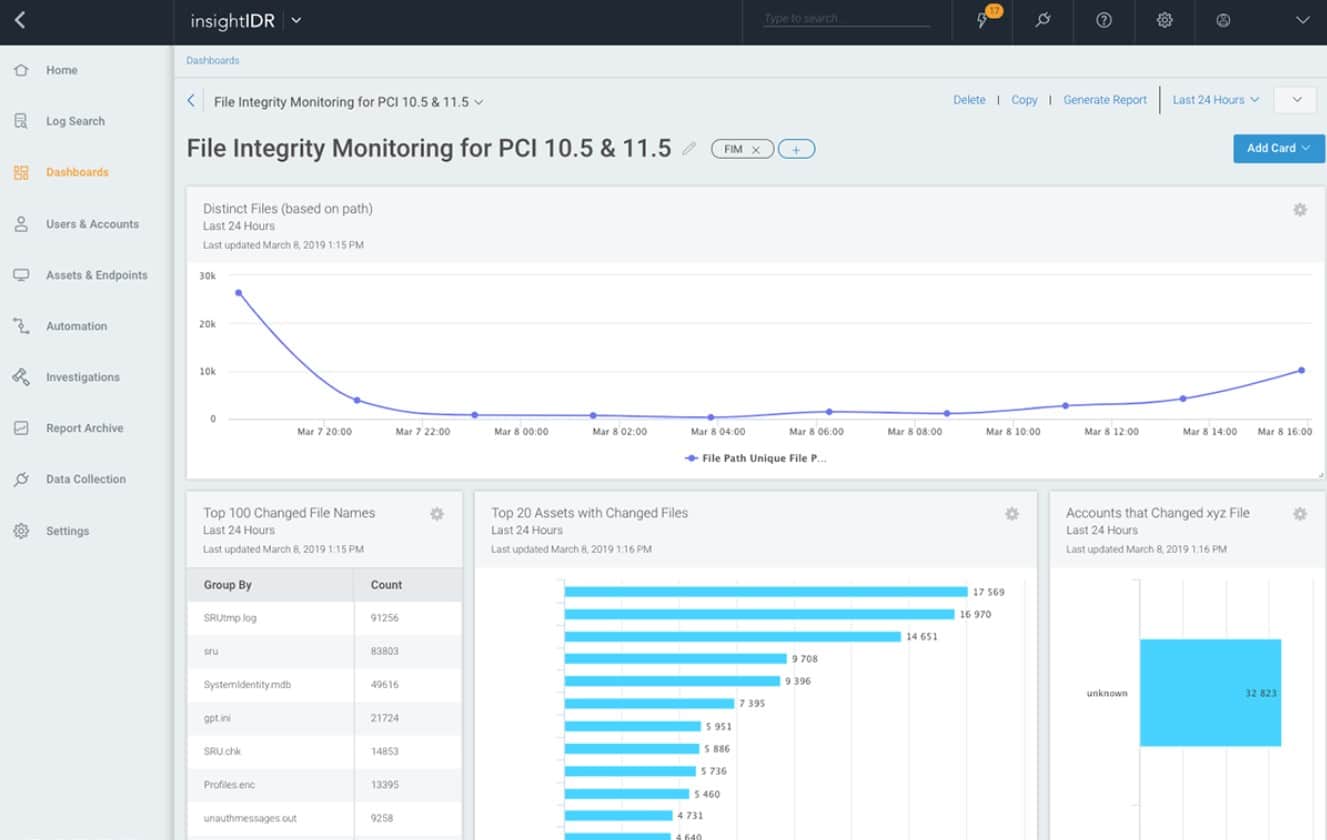
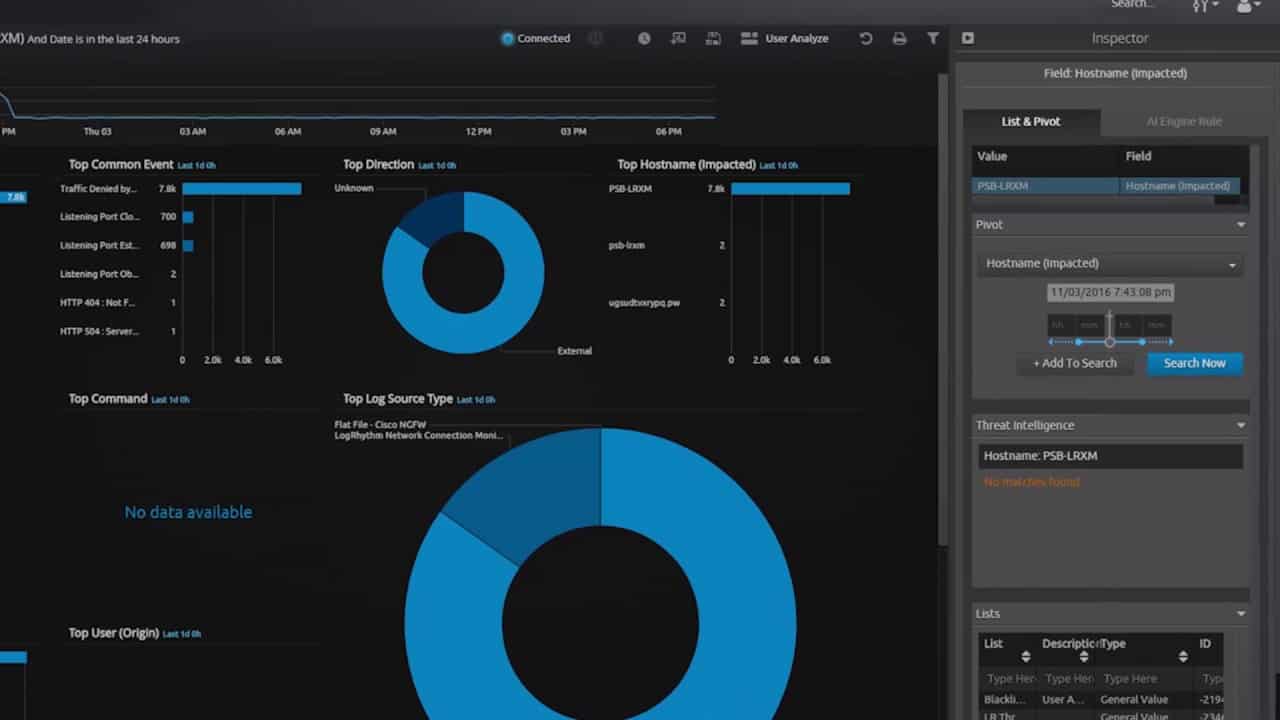
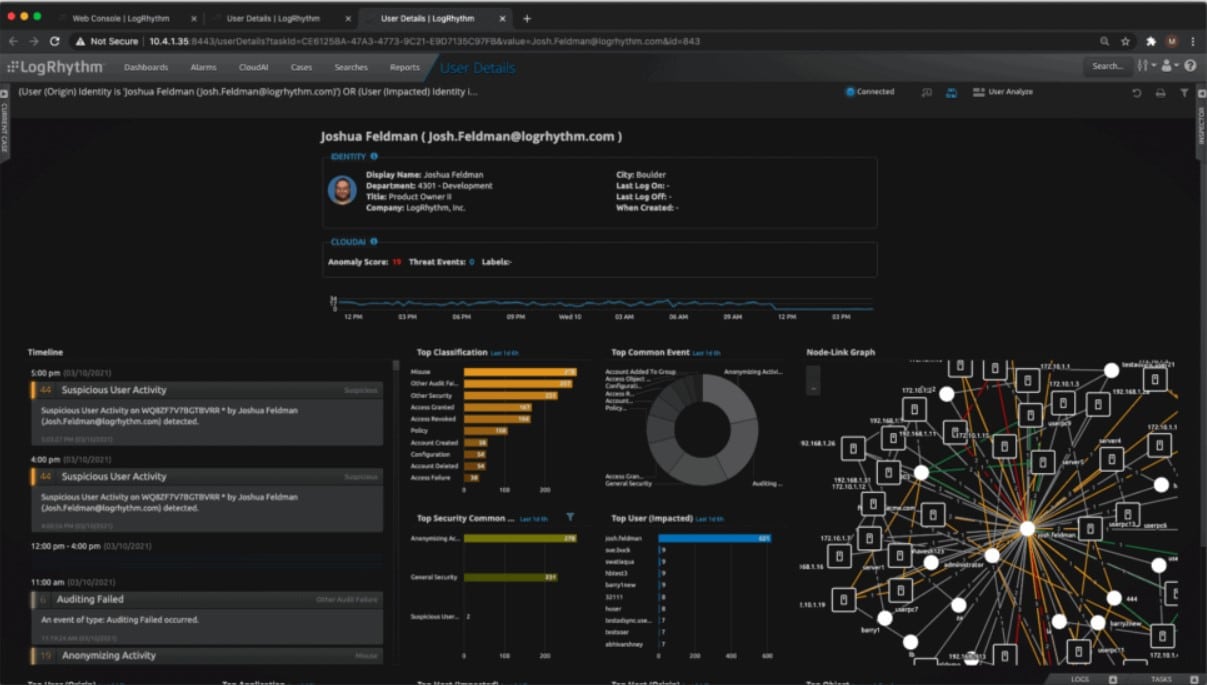
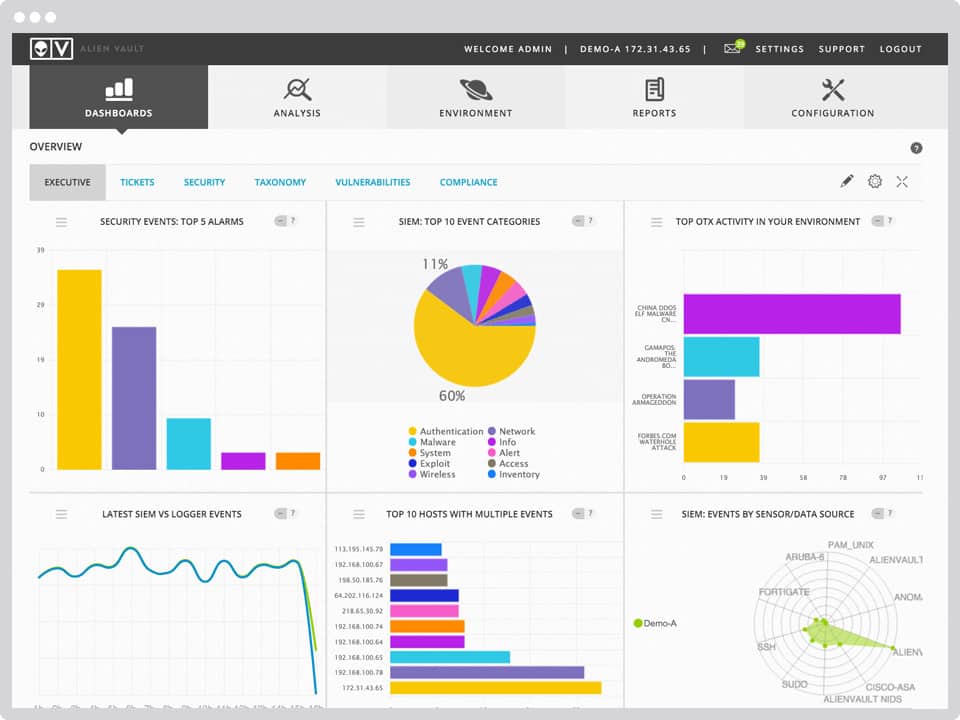
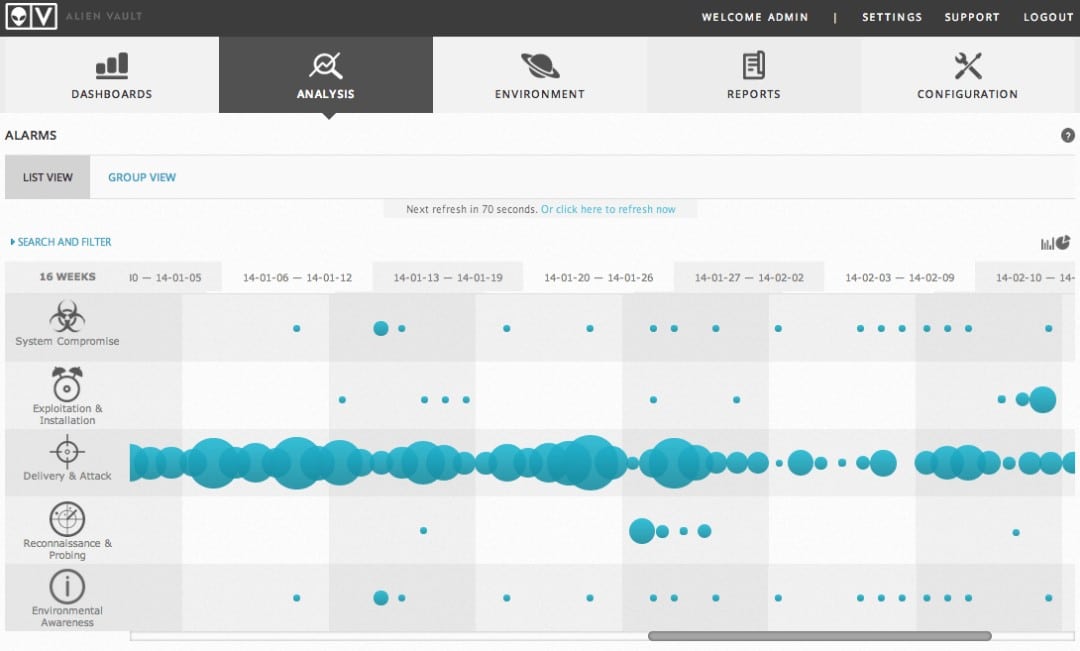


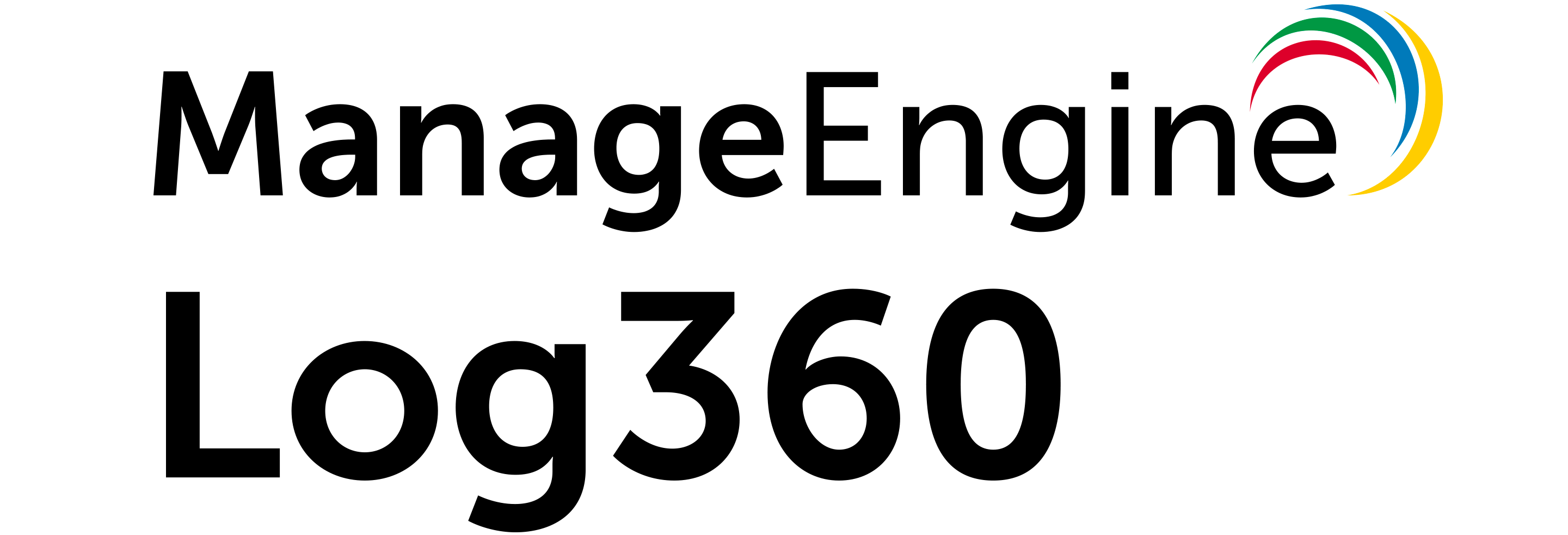
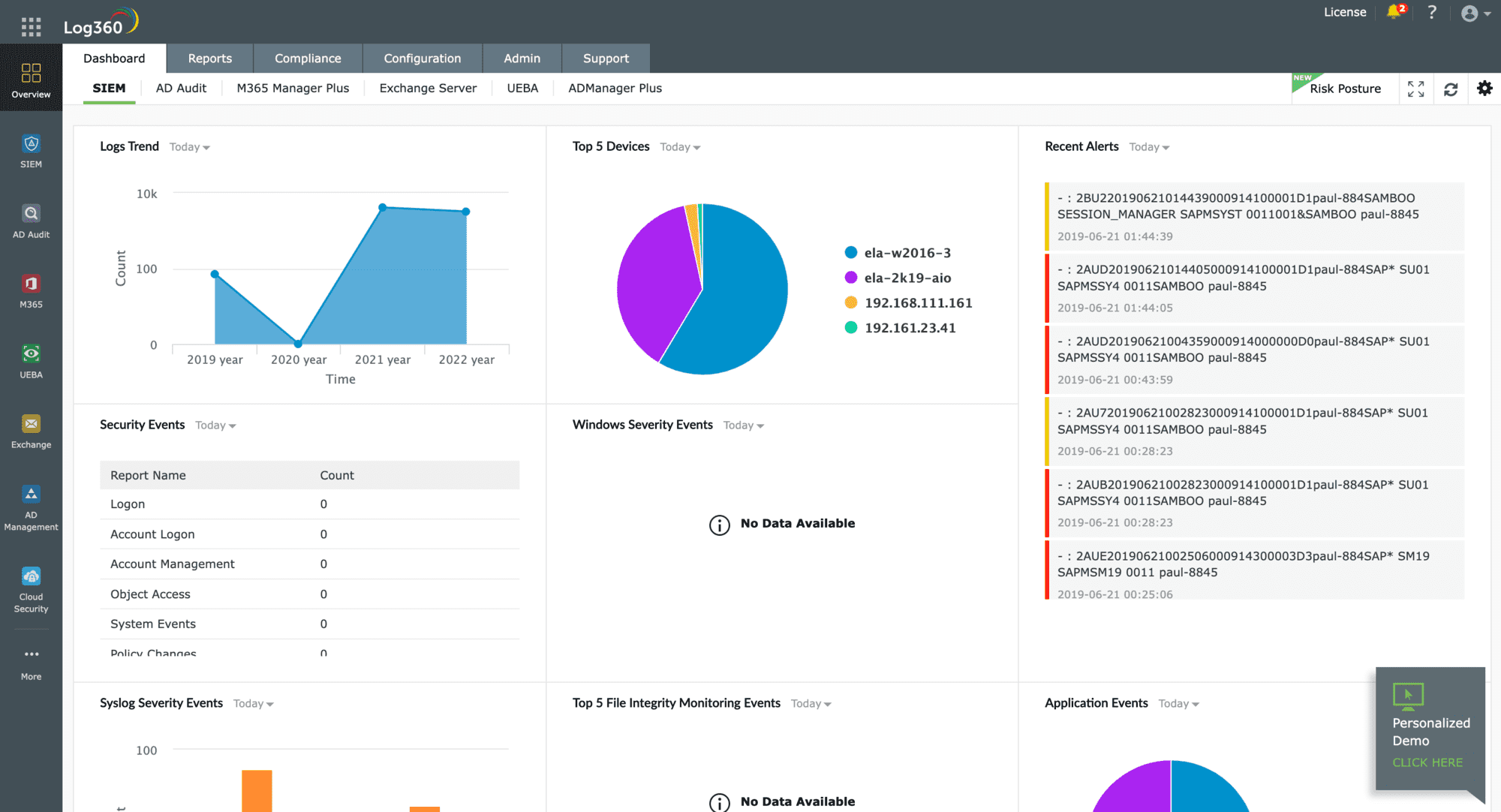
IBM QRadar has always ran on Linux and has been on RedHat Enterprise Linux for several years. Current version is RHEL 7.6. ArcSight is shouldn’t be recommended as R&D has pretty much come to a halt and most customers are migrating away from it besides the expense and overhead required to maintain the infrastructure.
Thanks for the heads up! We’ve changed that now.
The SolarWinds SEM requires an agent that installs Java.
Tim,
What isn’t discussed here (and by the way nice analysis of the tools) is what platforms (SaaS,PaaS,IaaS, hosted enviornments) that the SIEMs work with or not. This is an open issue with most tools.
Sarah
Best explanation on SIEM and SIEM tools. Difference between SIEM, SIM and SEM well explained in short.
The top 8 Tools under SIEM belt with the OS on which they can be installed and run for threat detection and threat analysis.
Thank you.
Awesome conceptual details about SIEM tools. Missed one opensource SIEM tool here OSSEC
Good information: Thanks for the education.